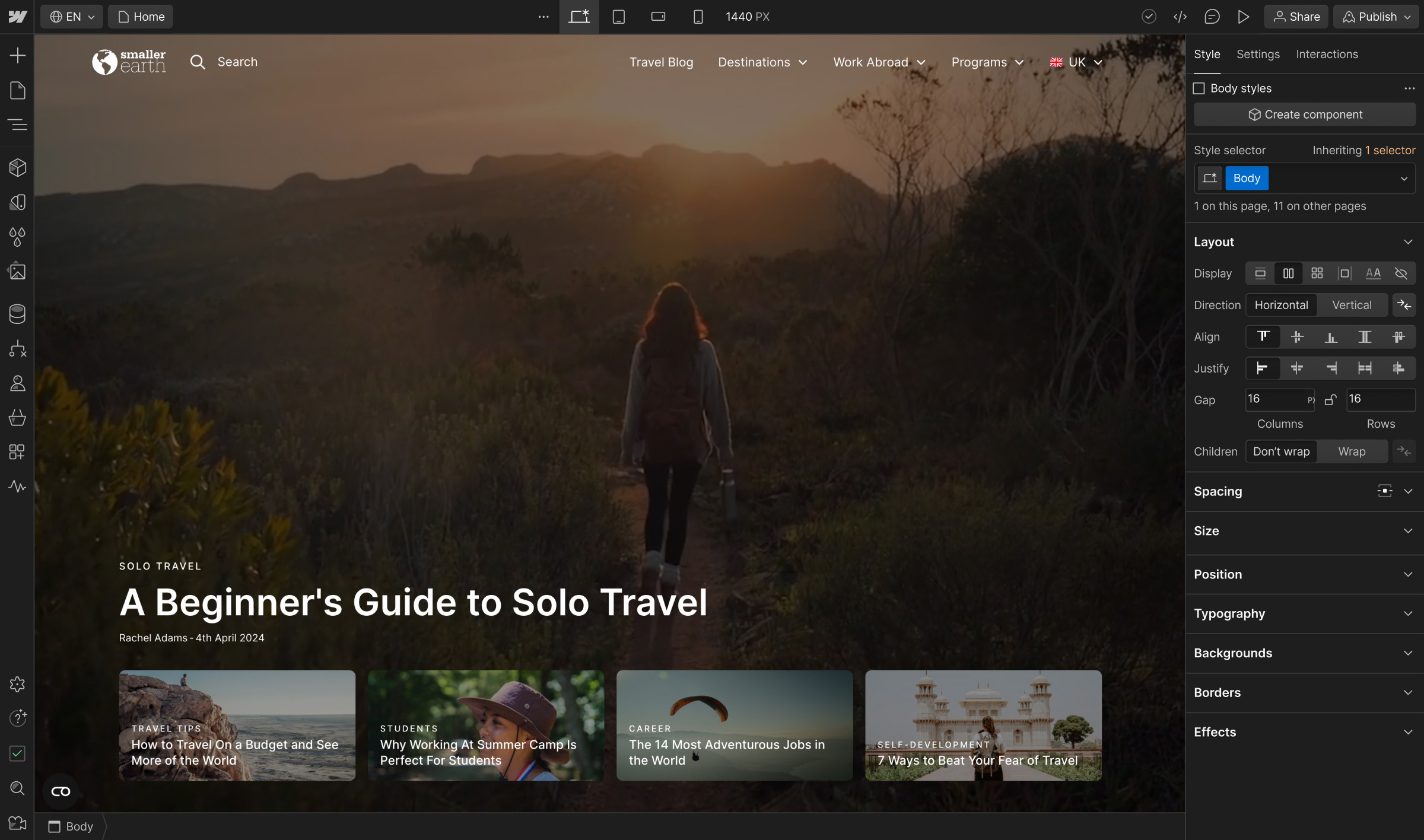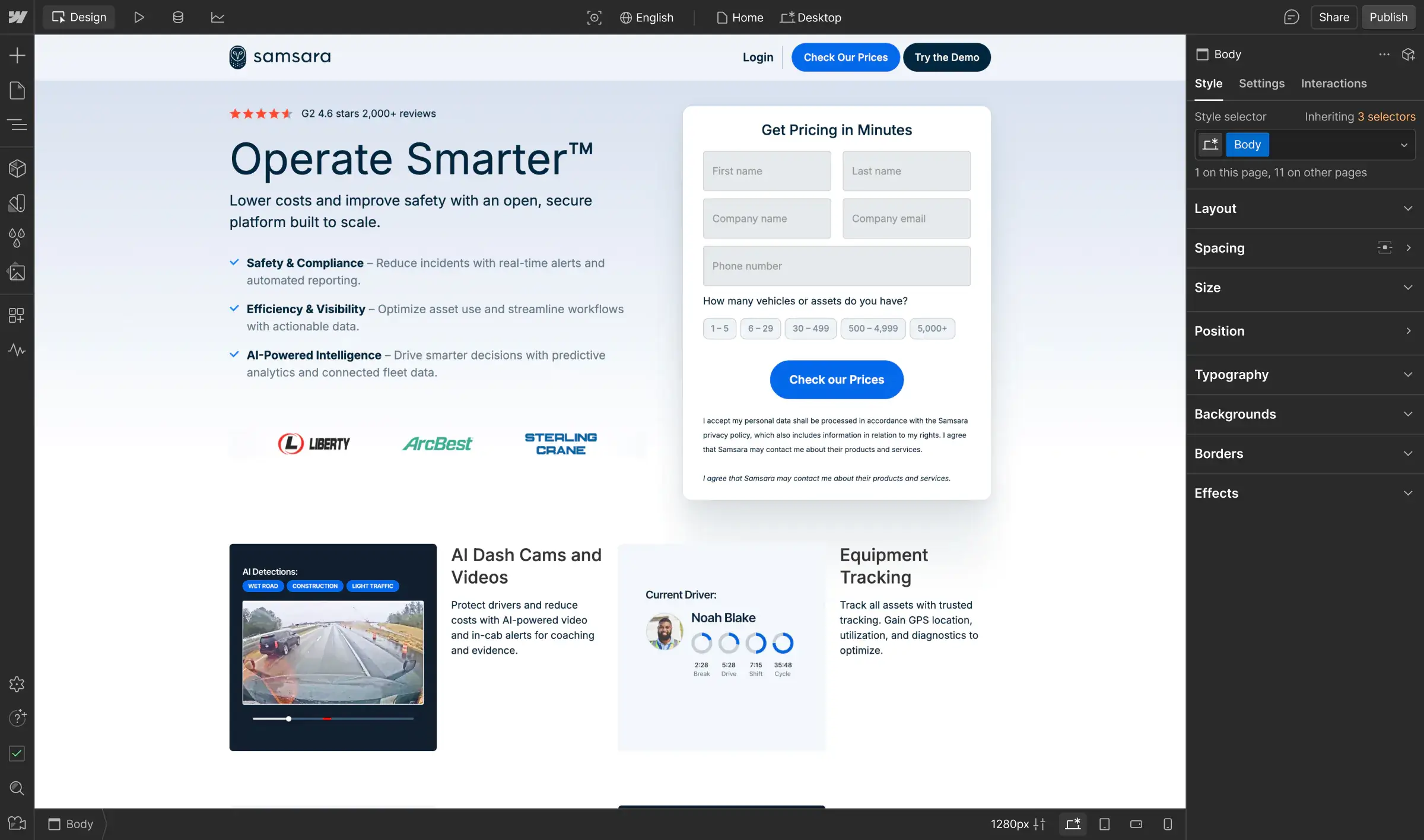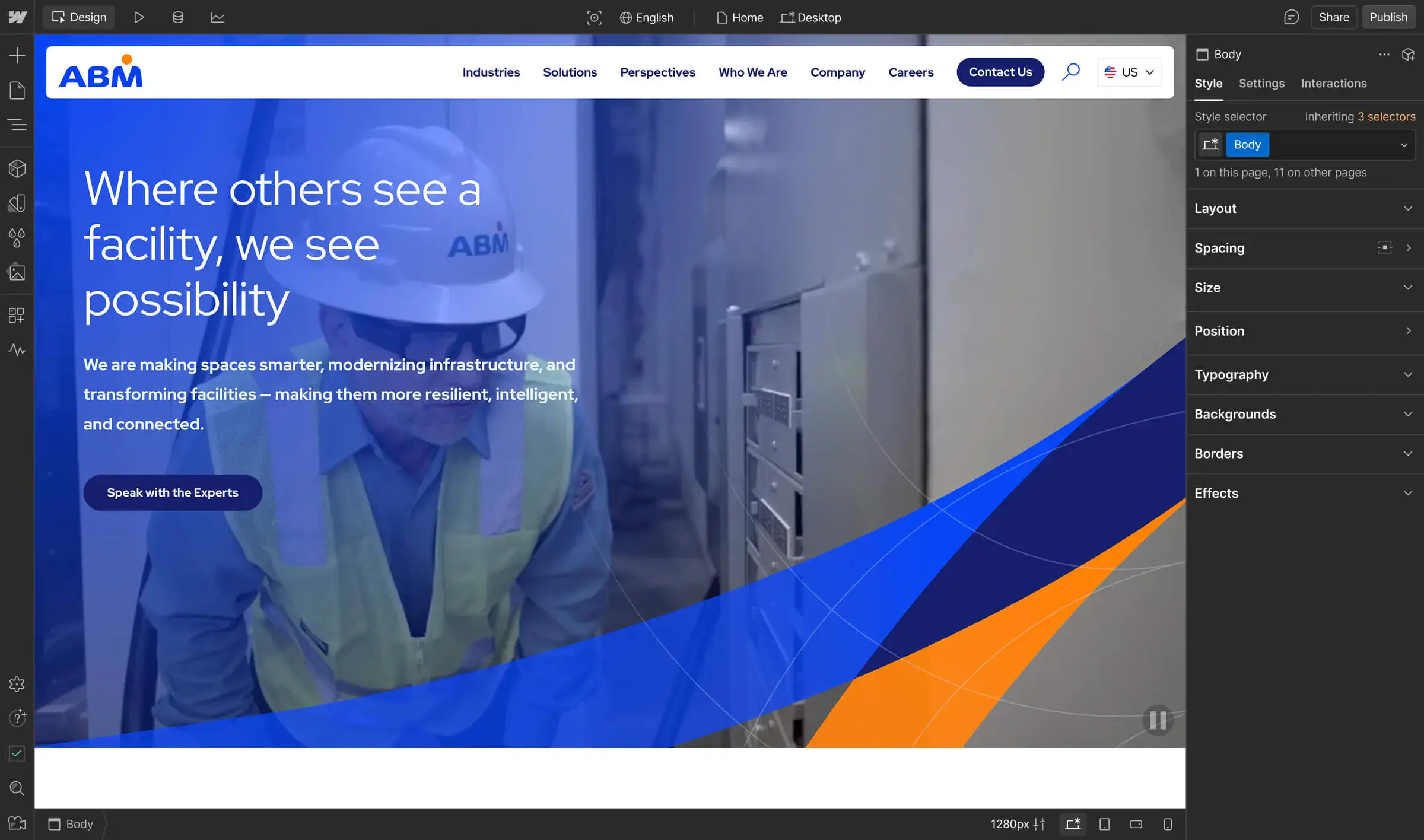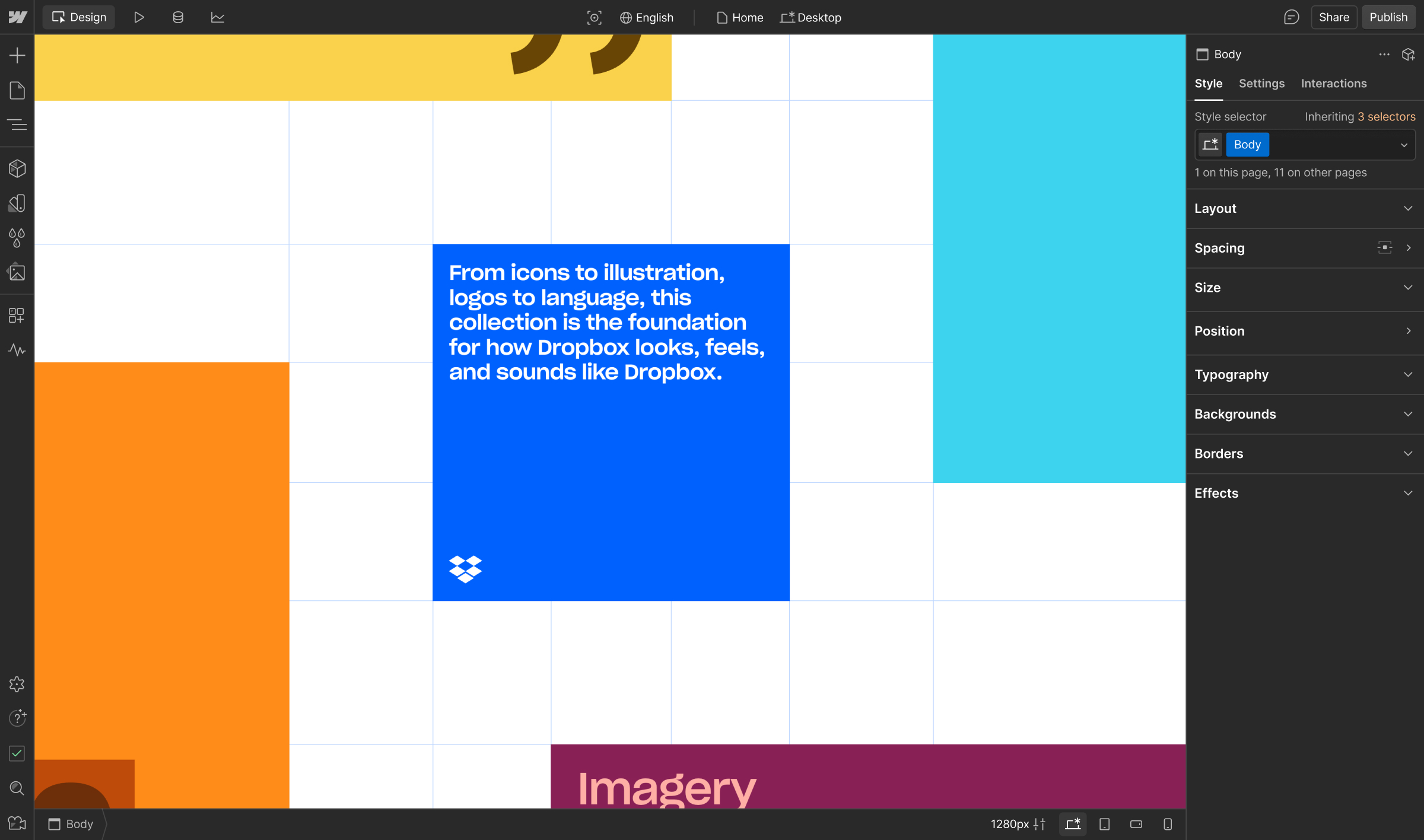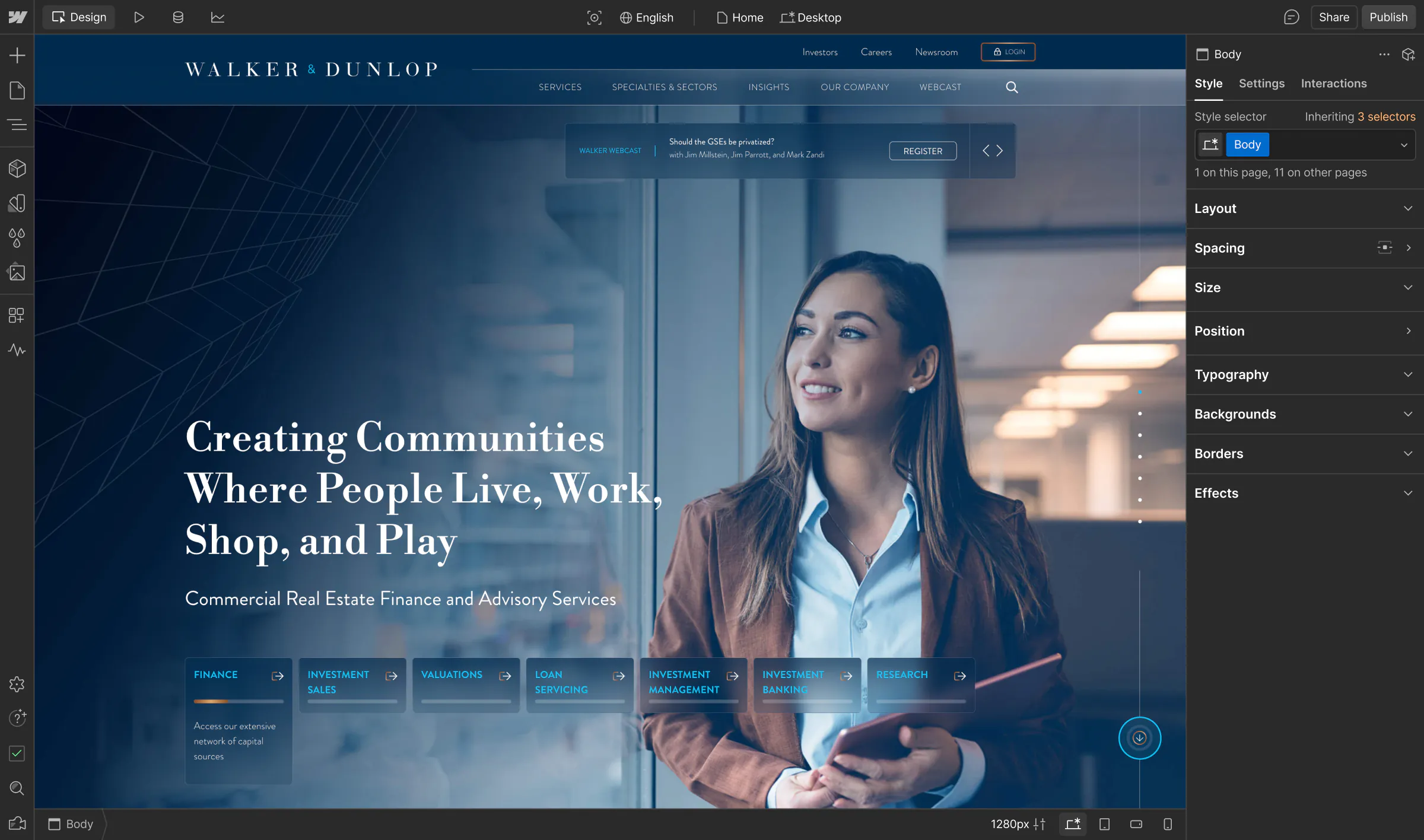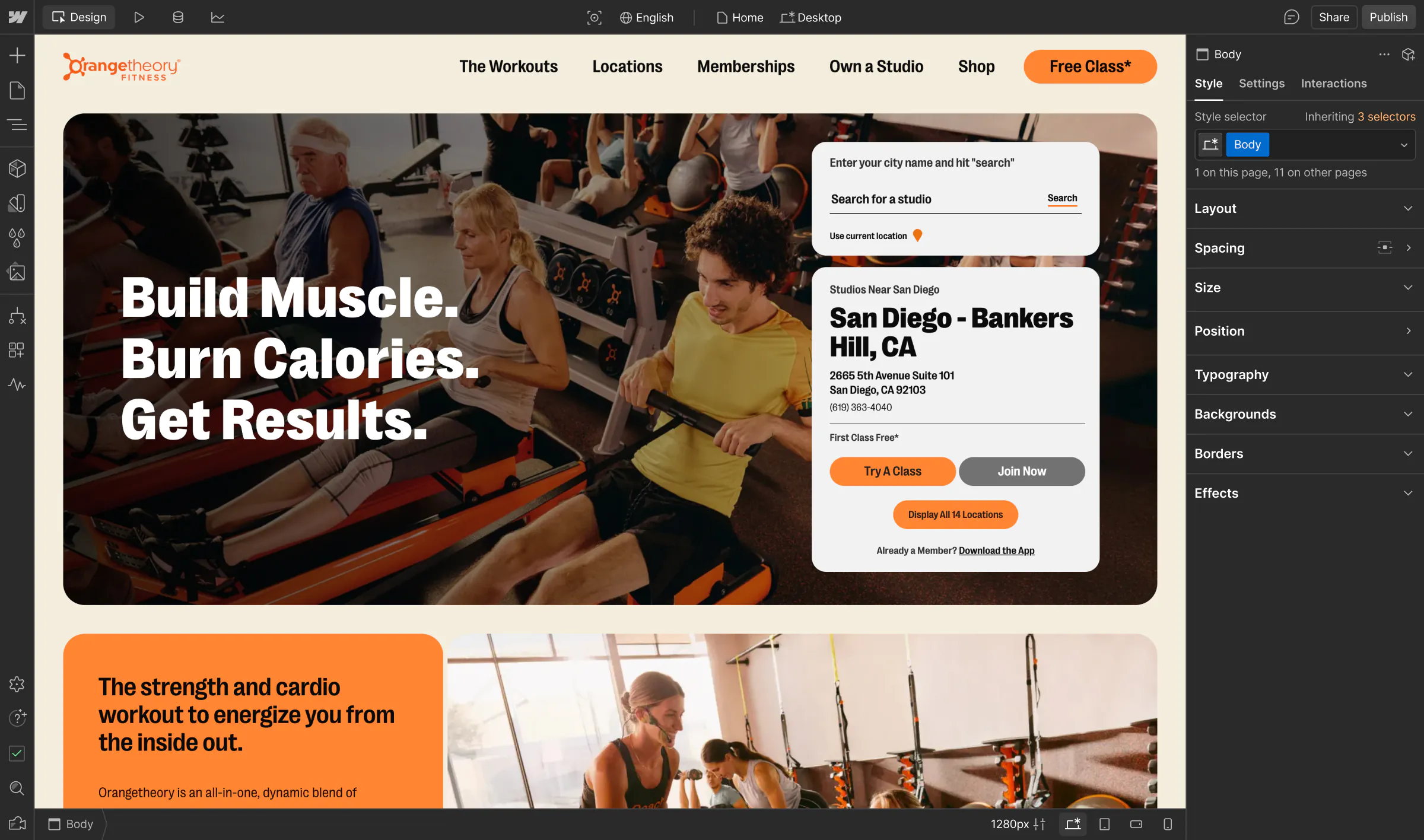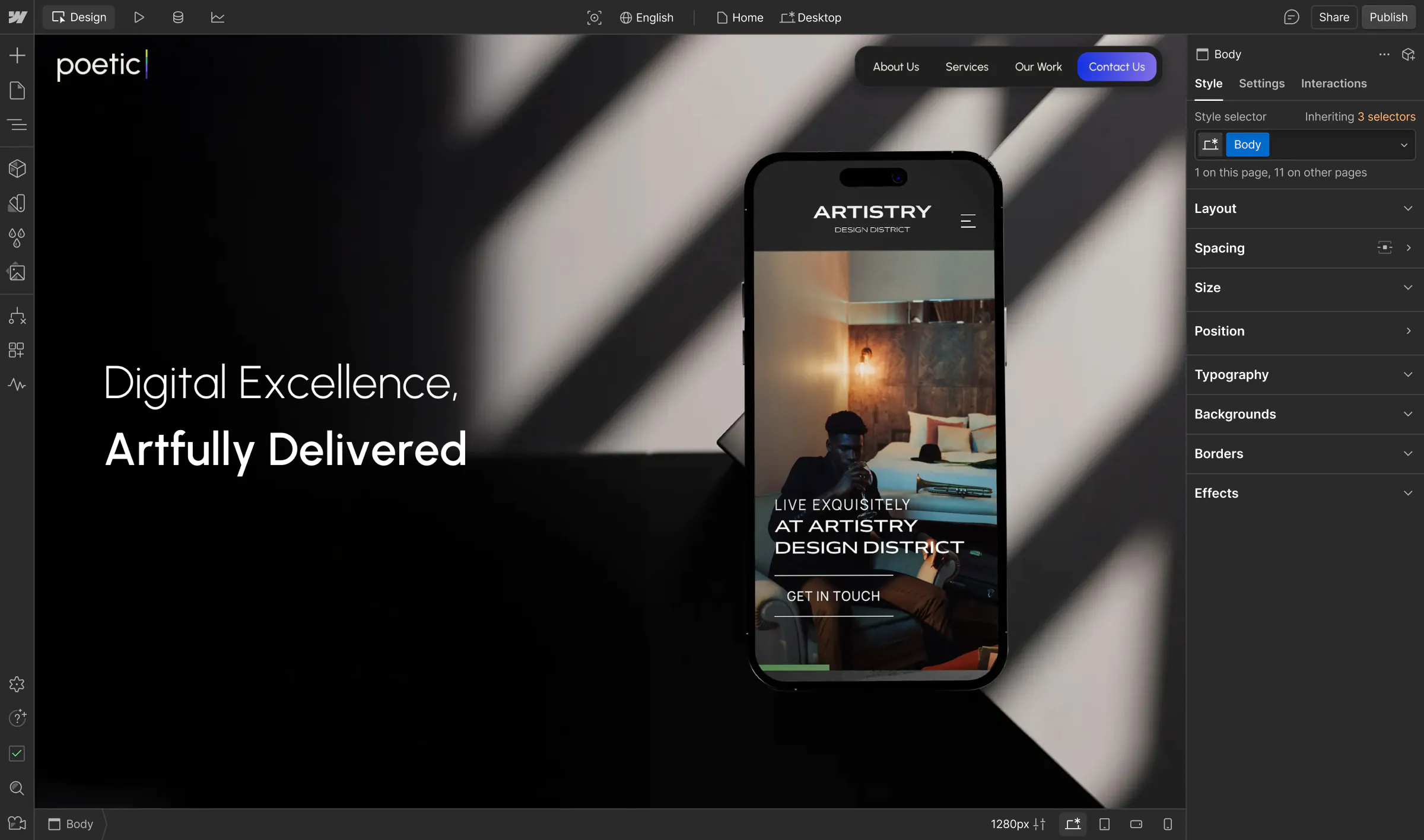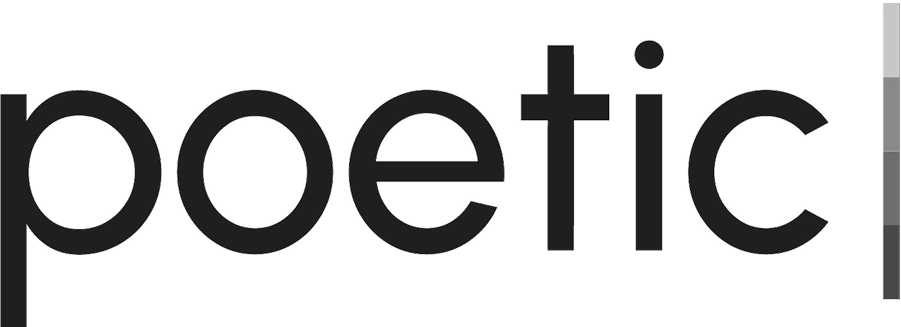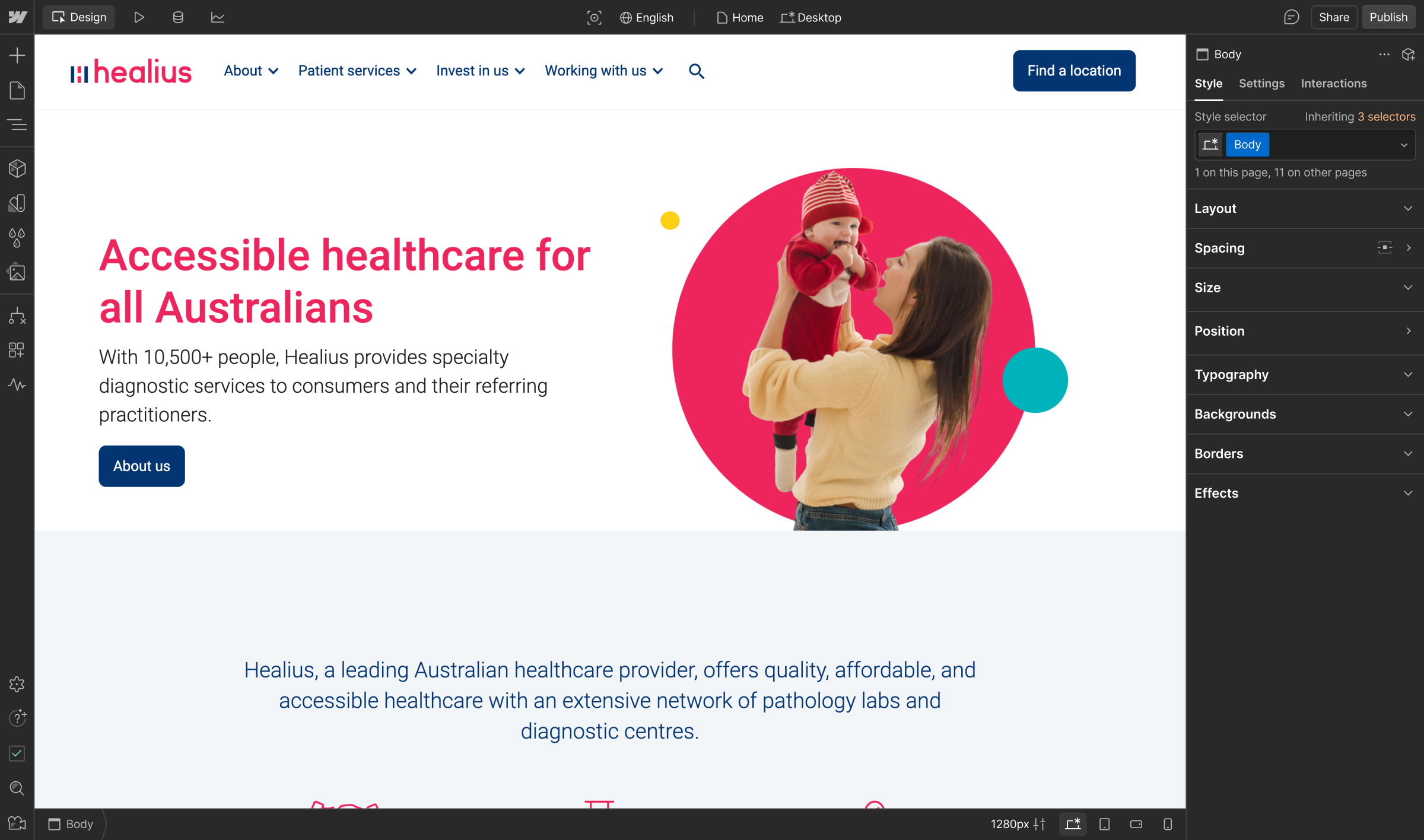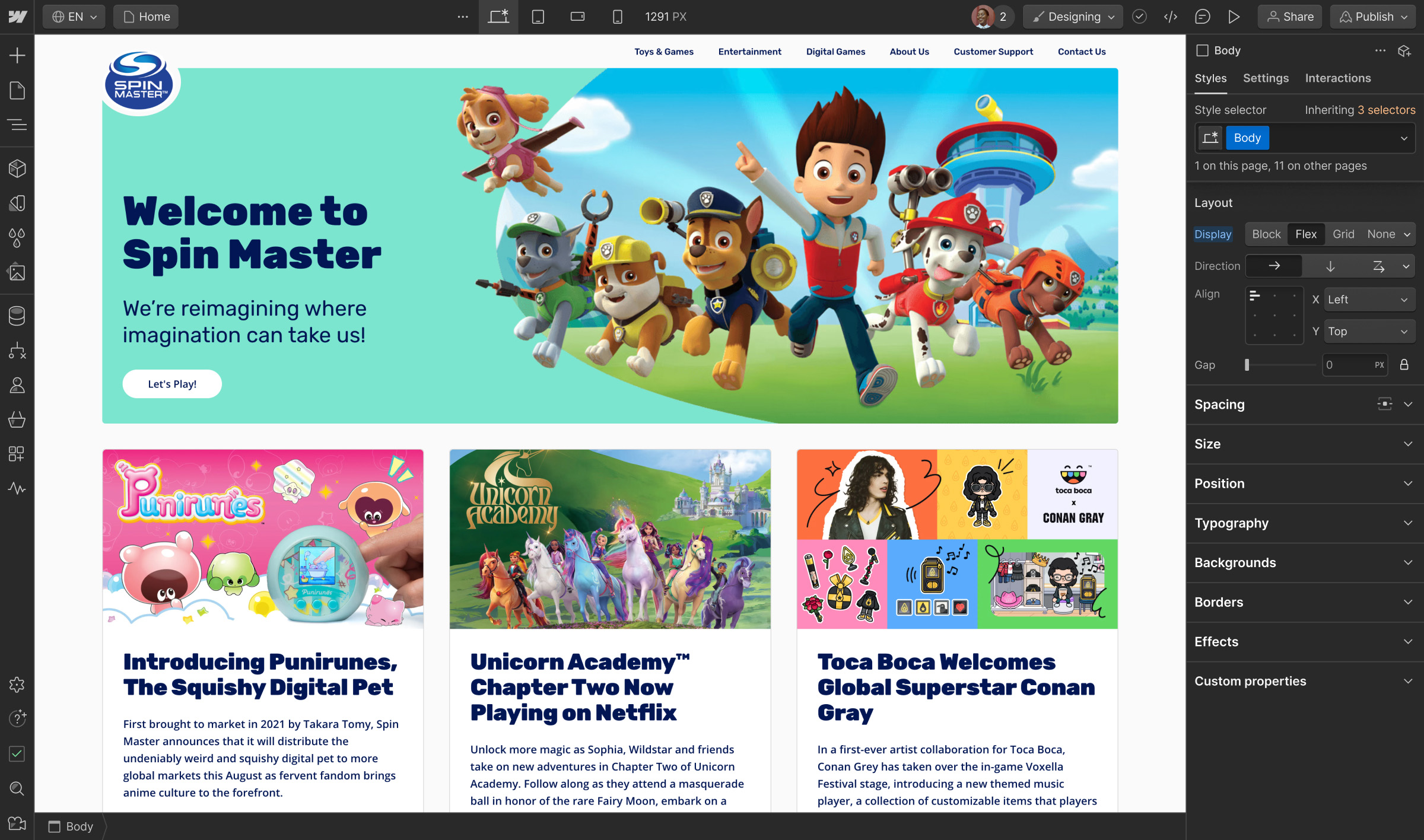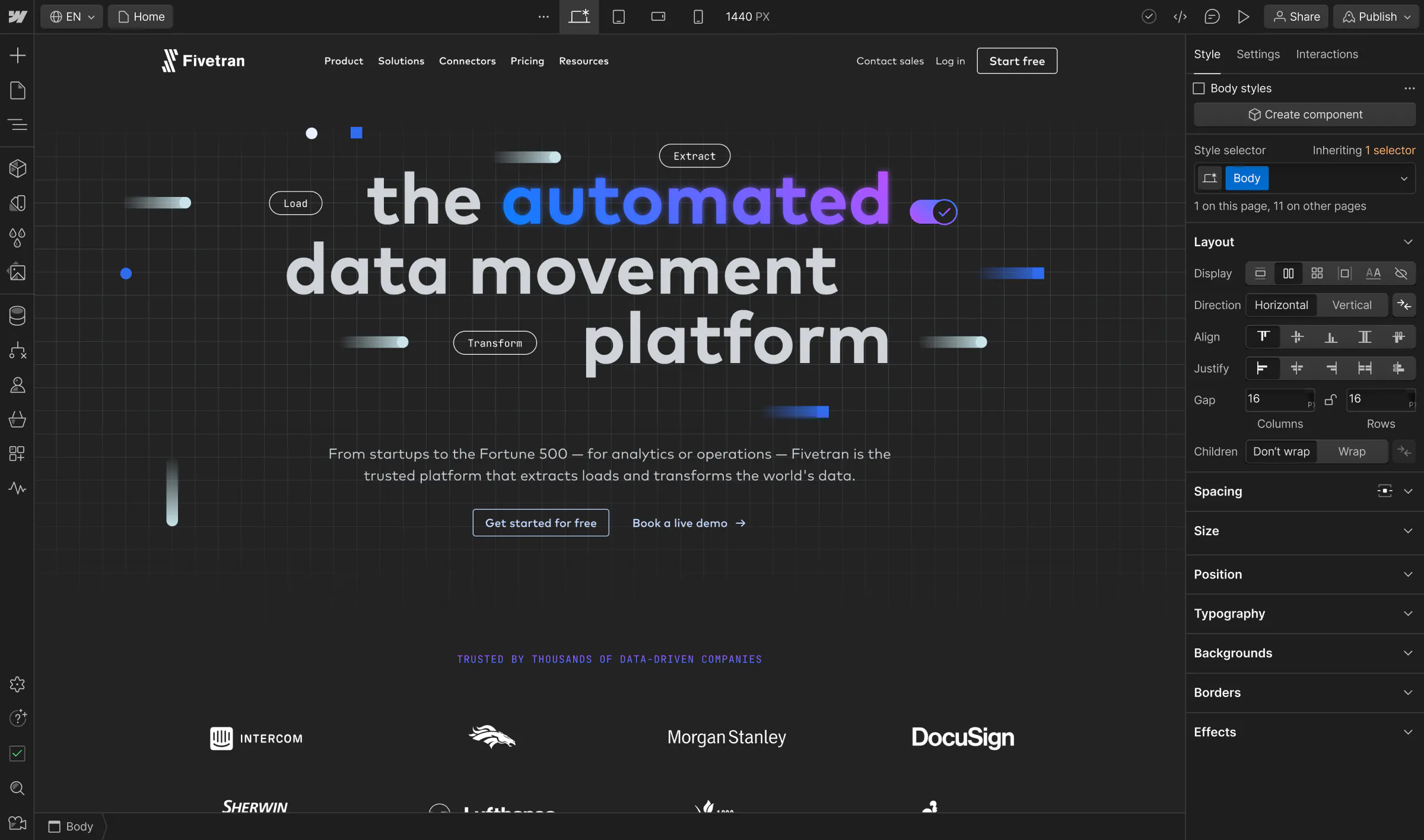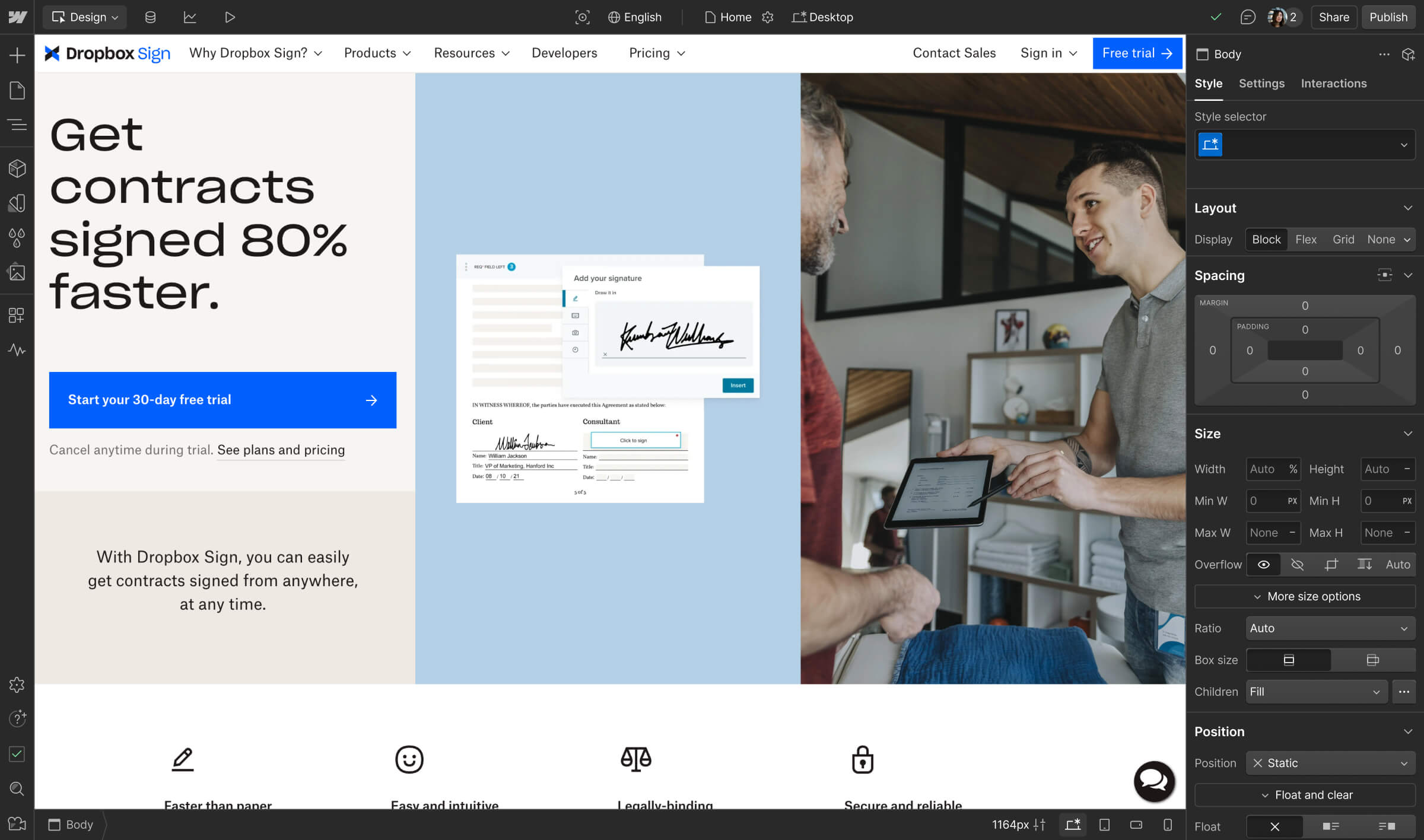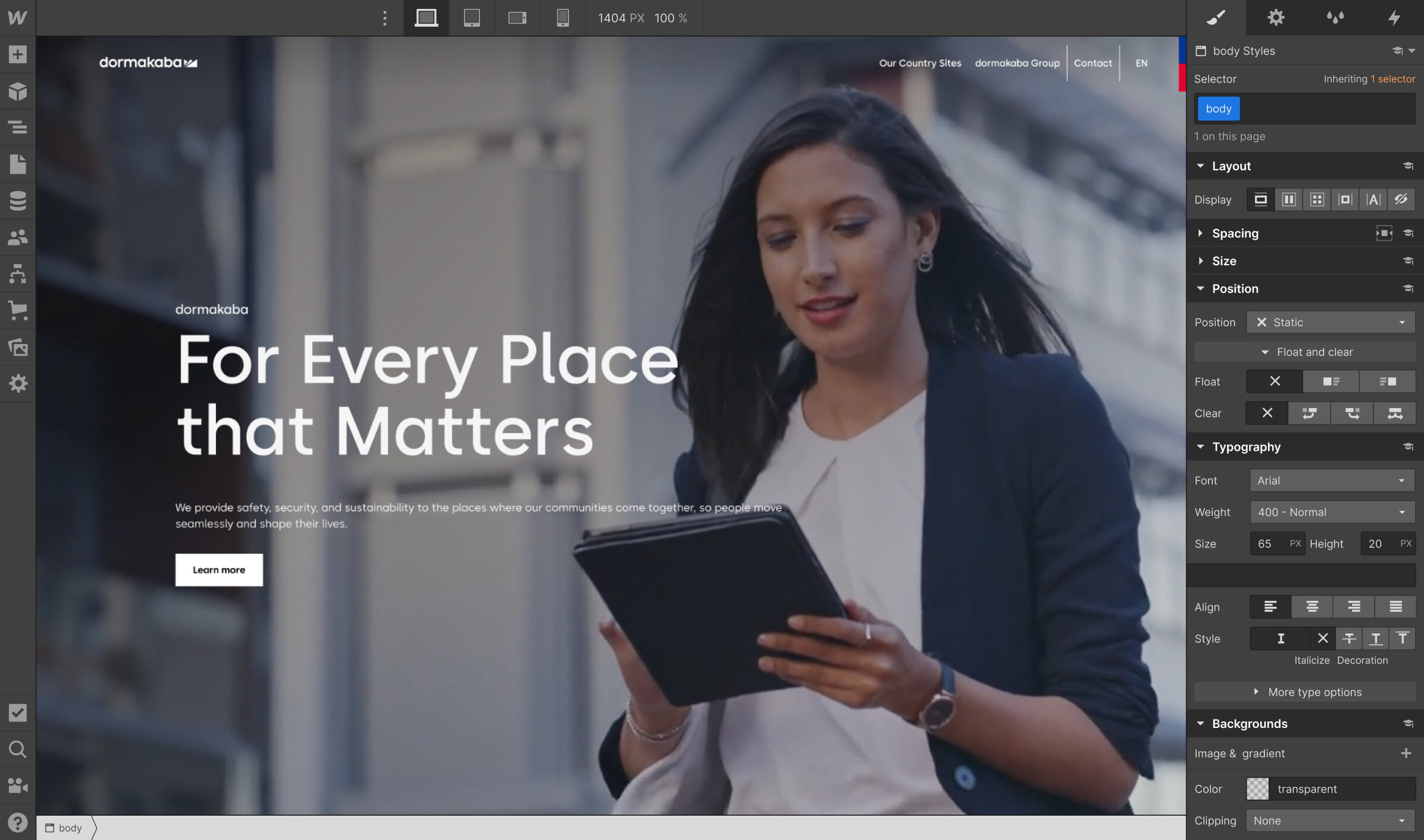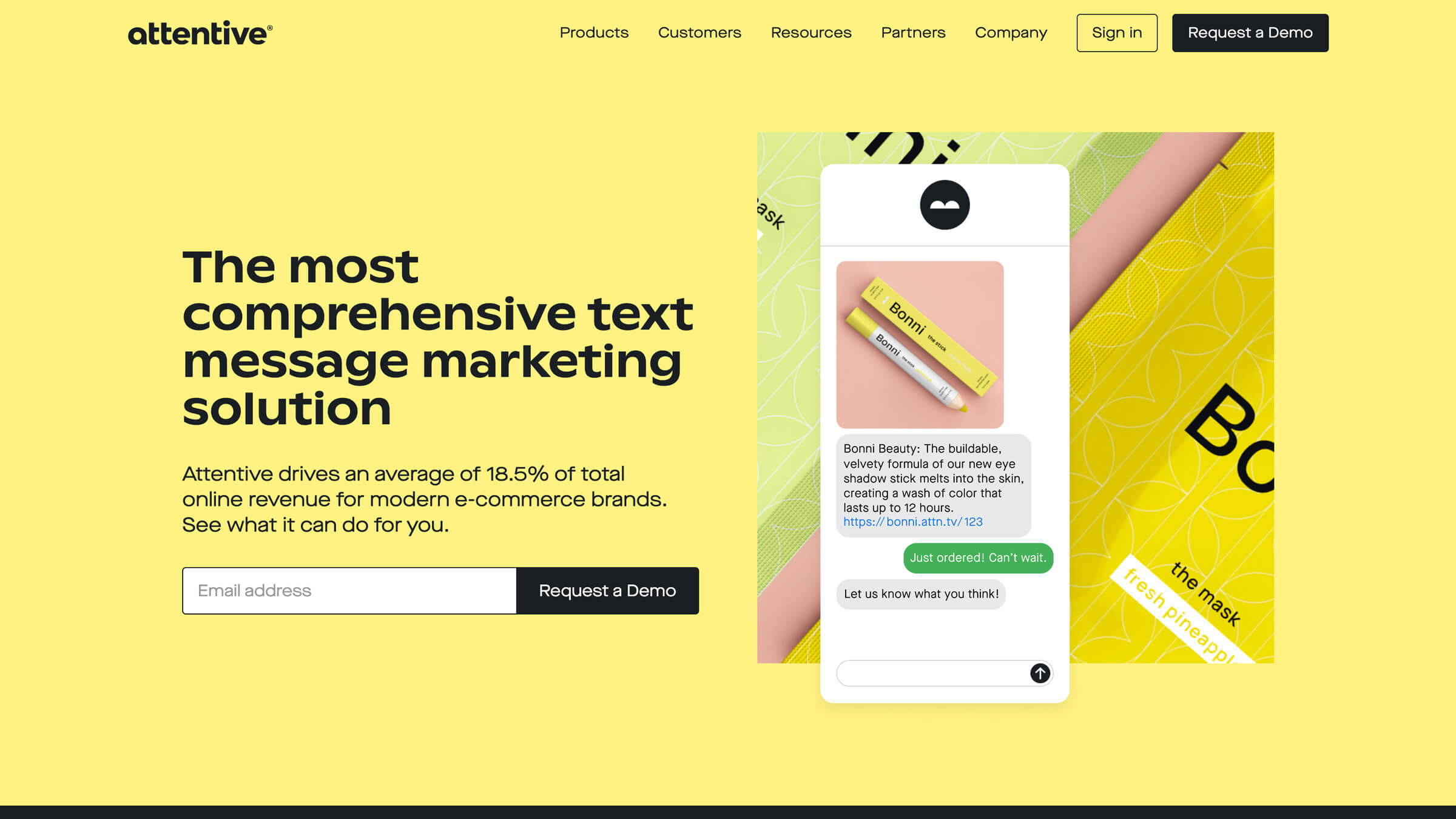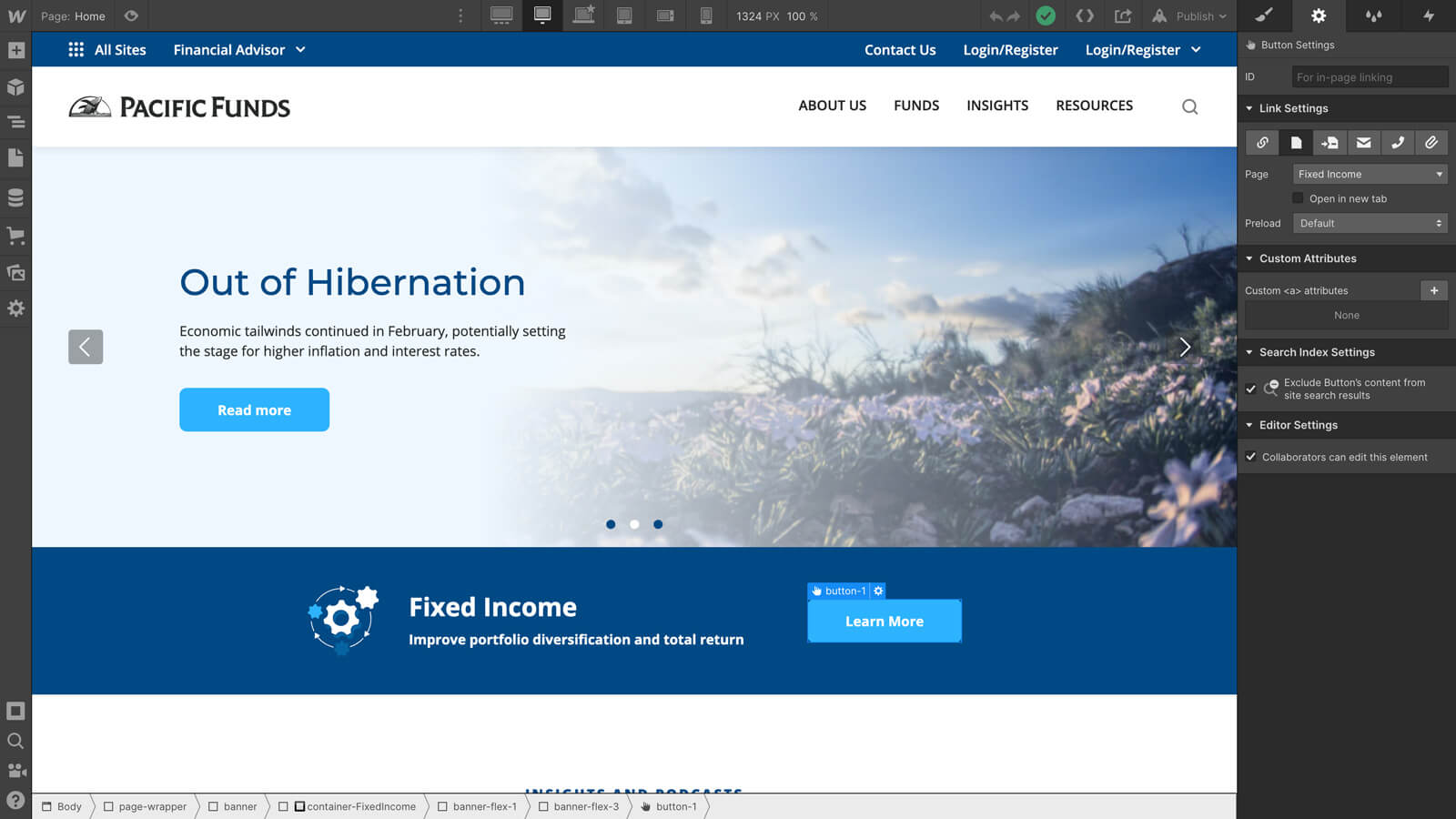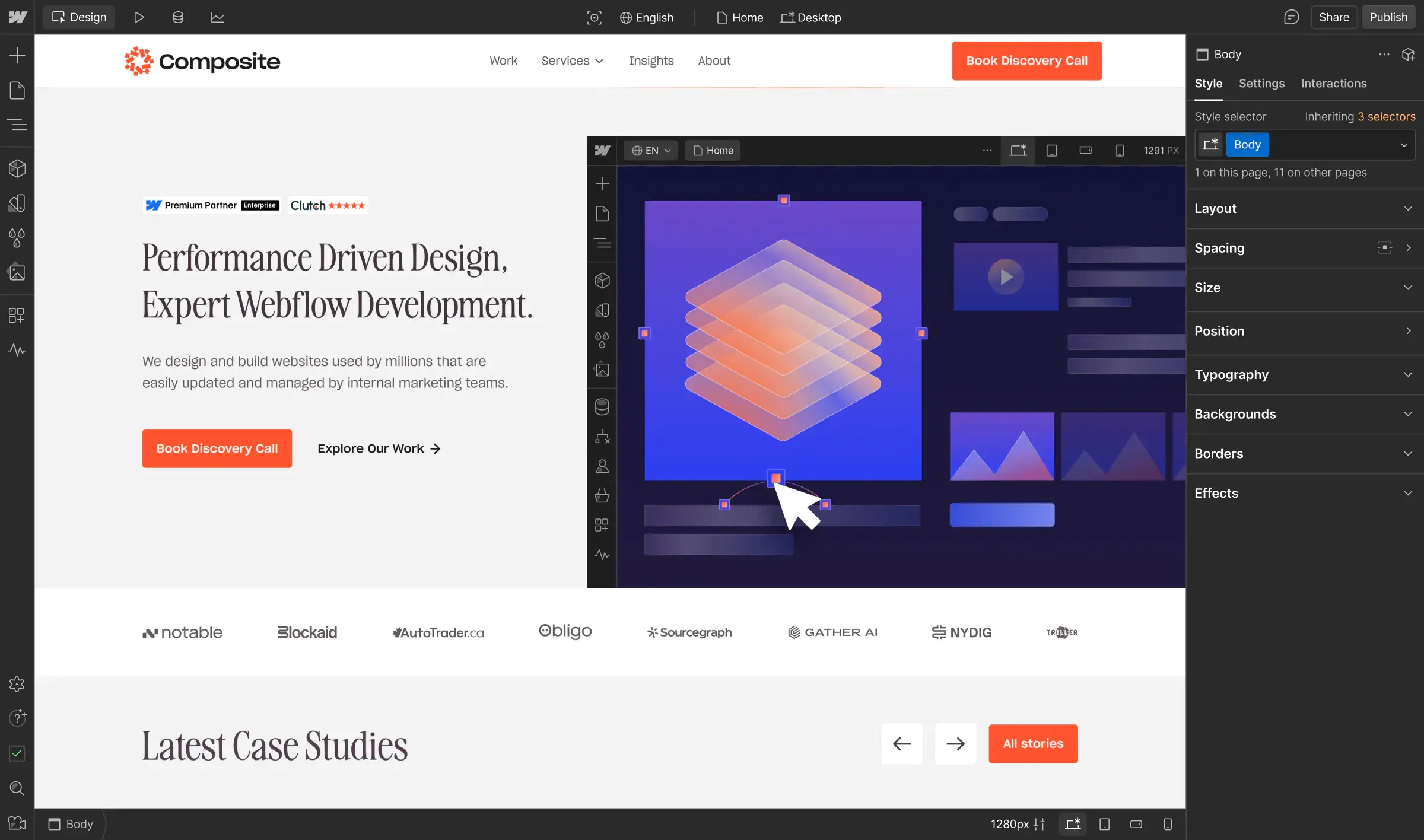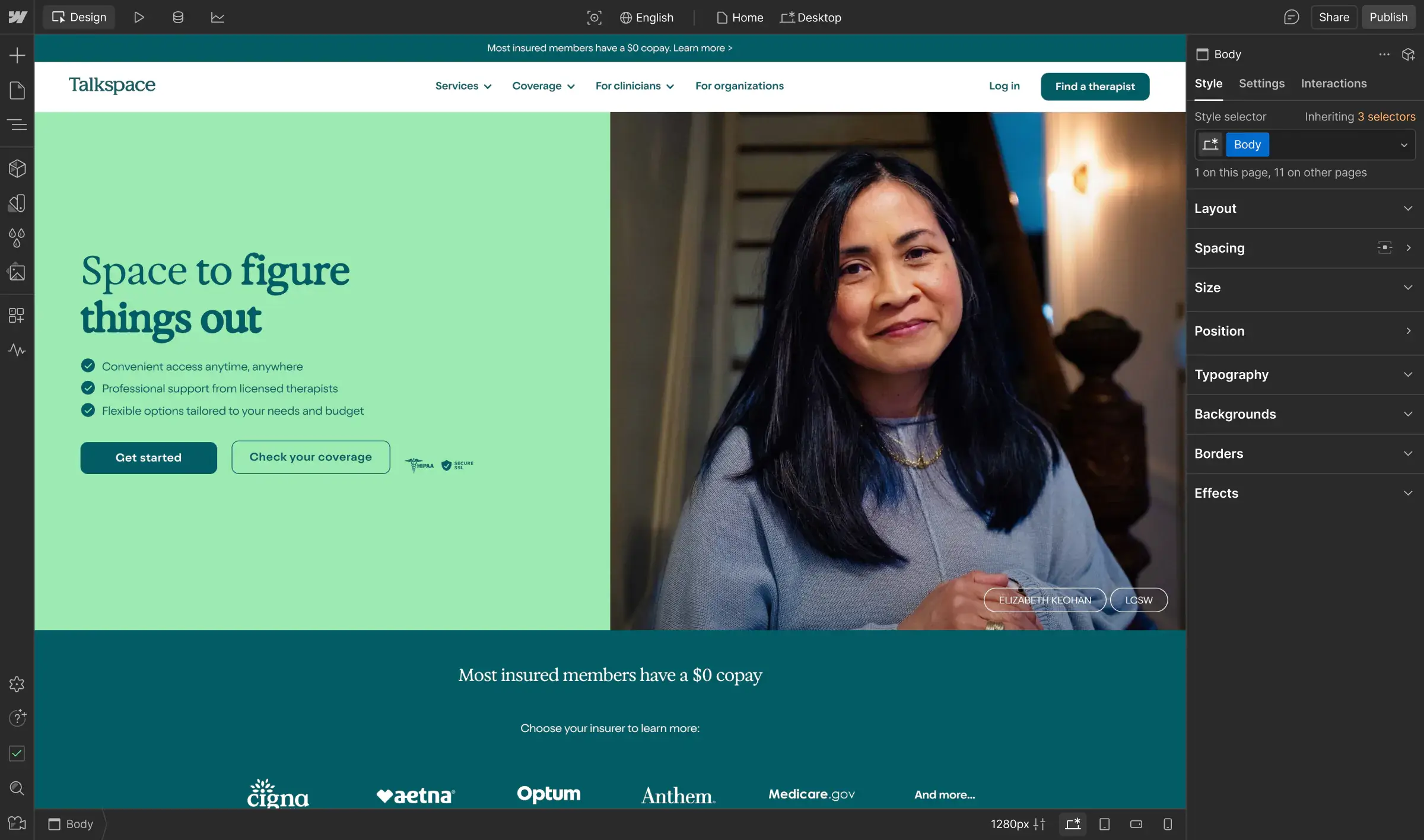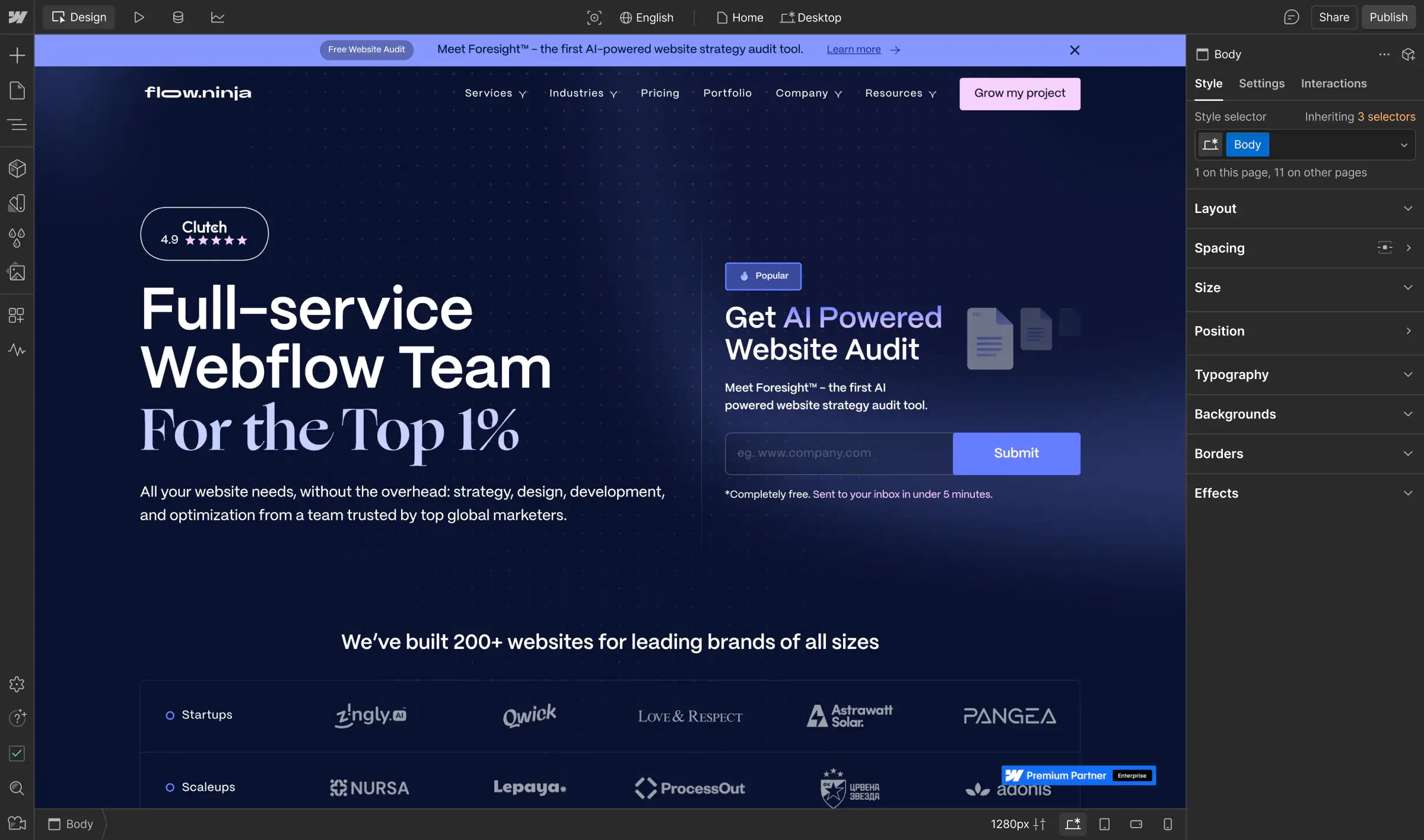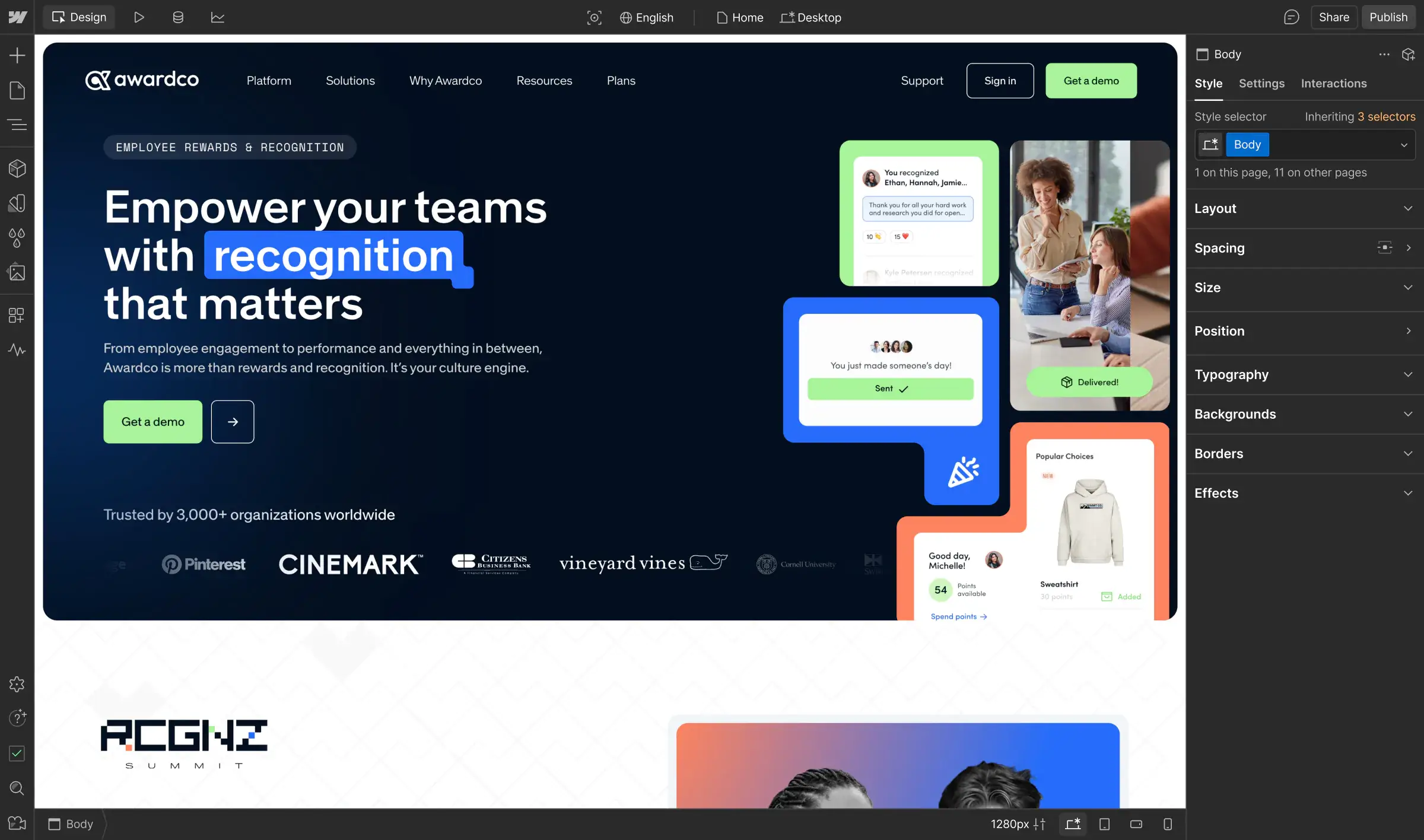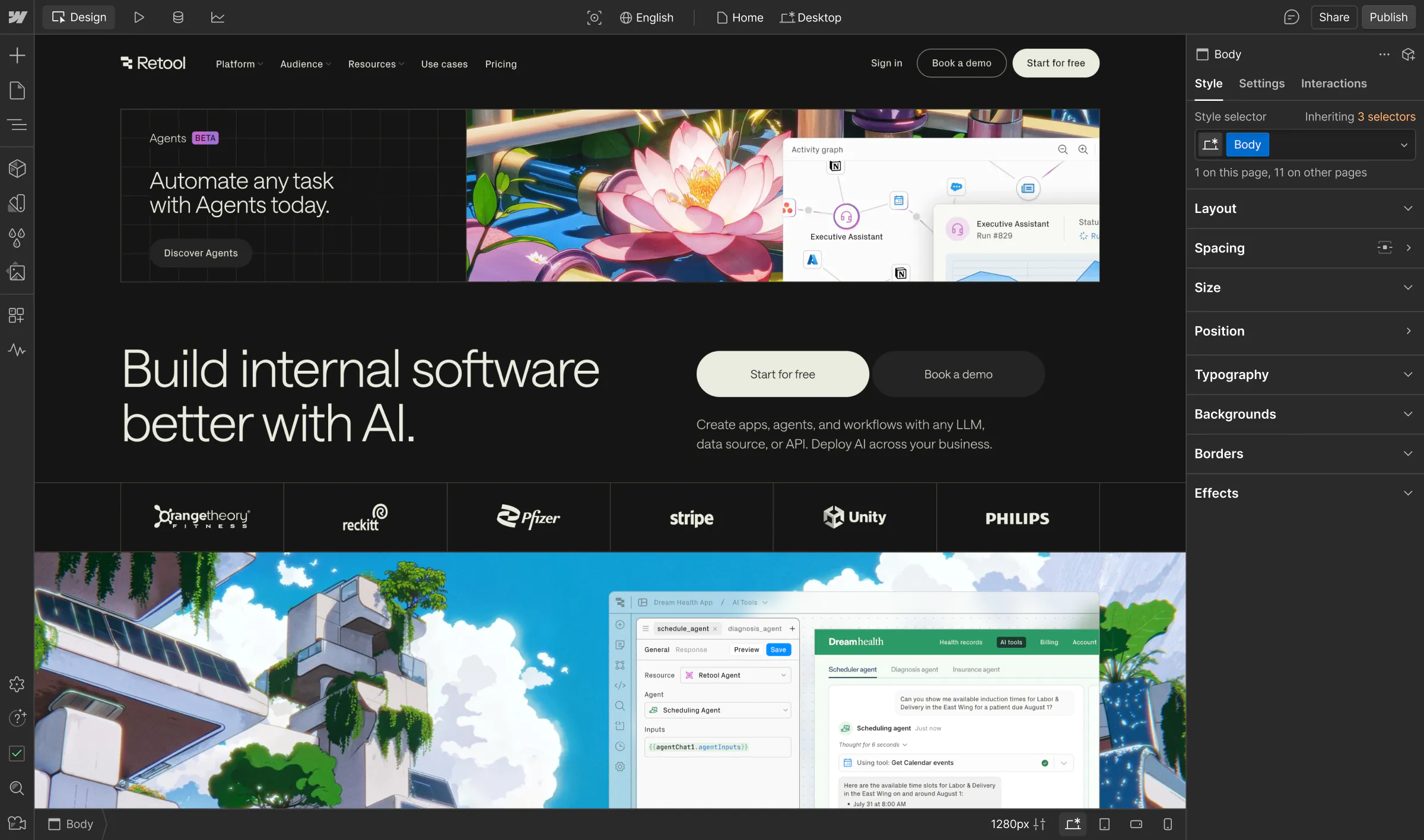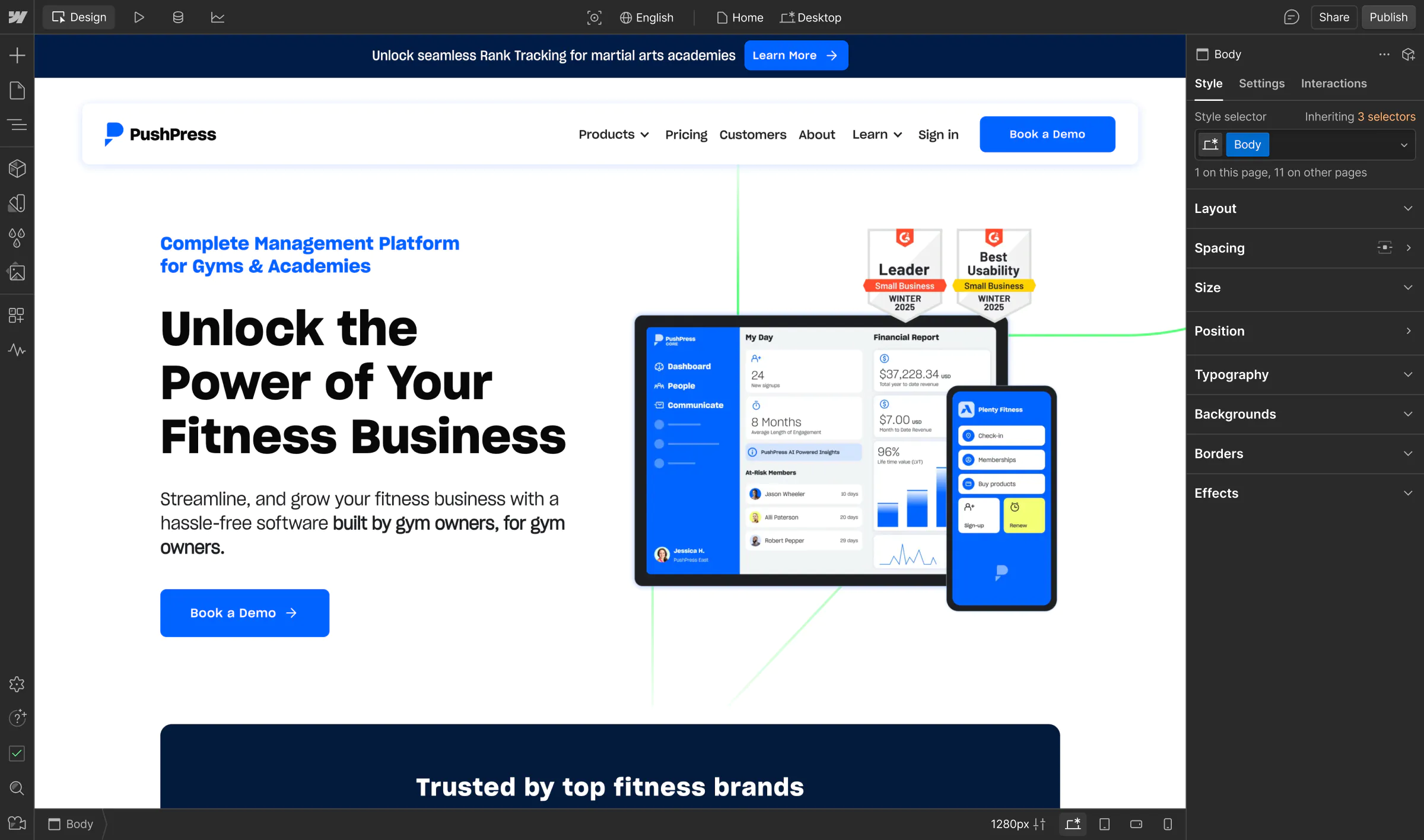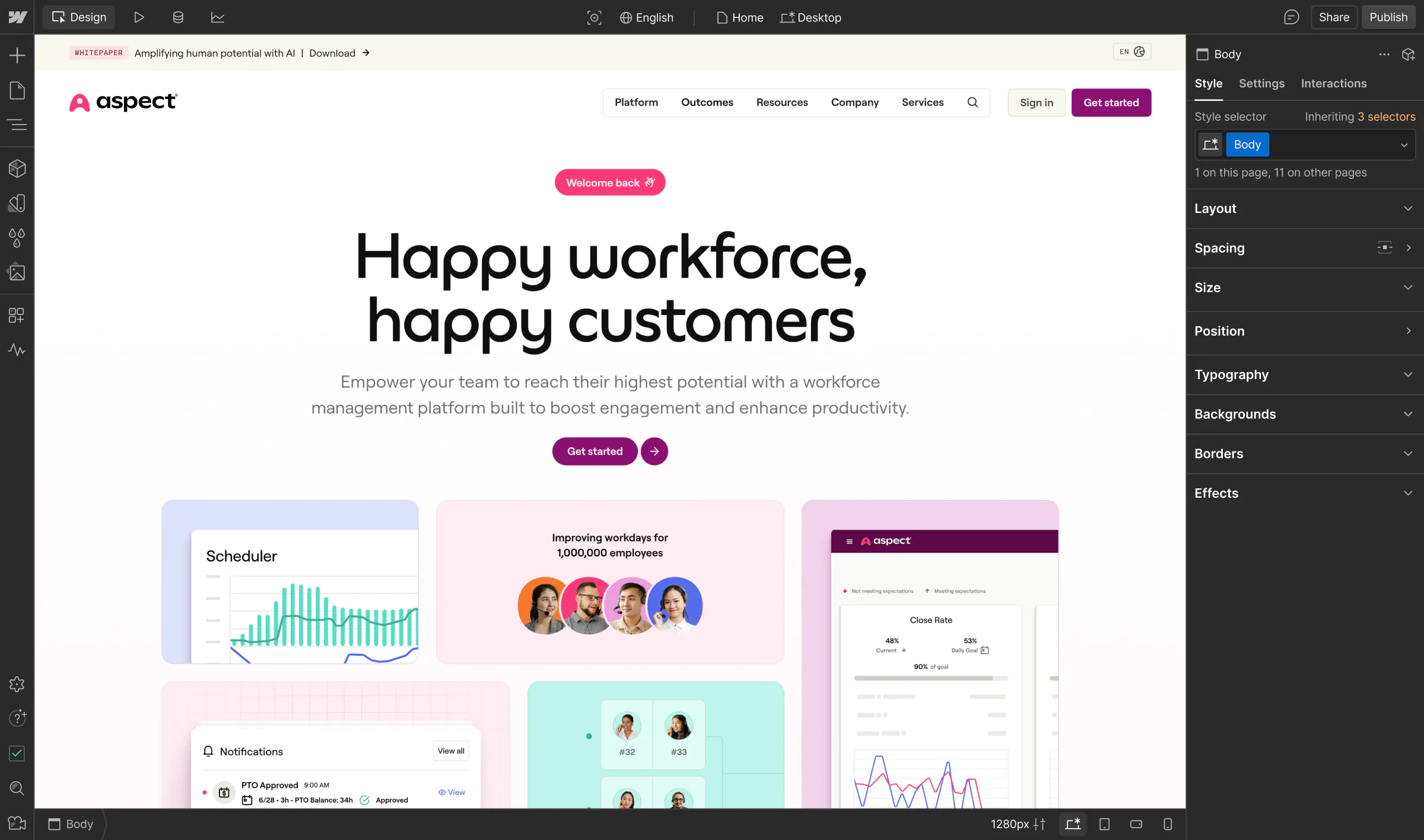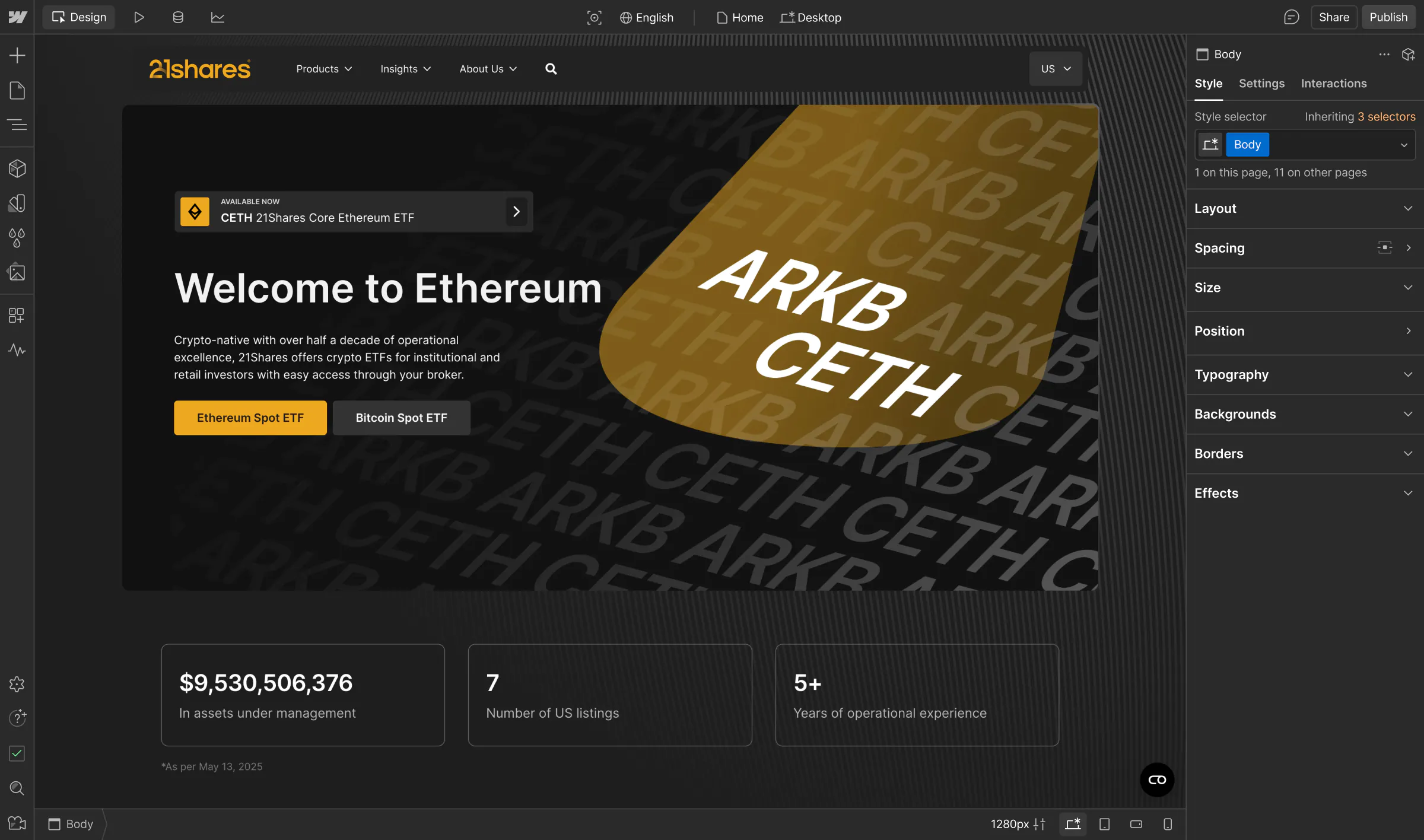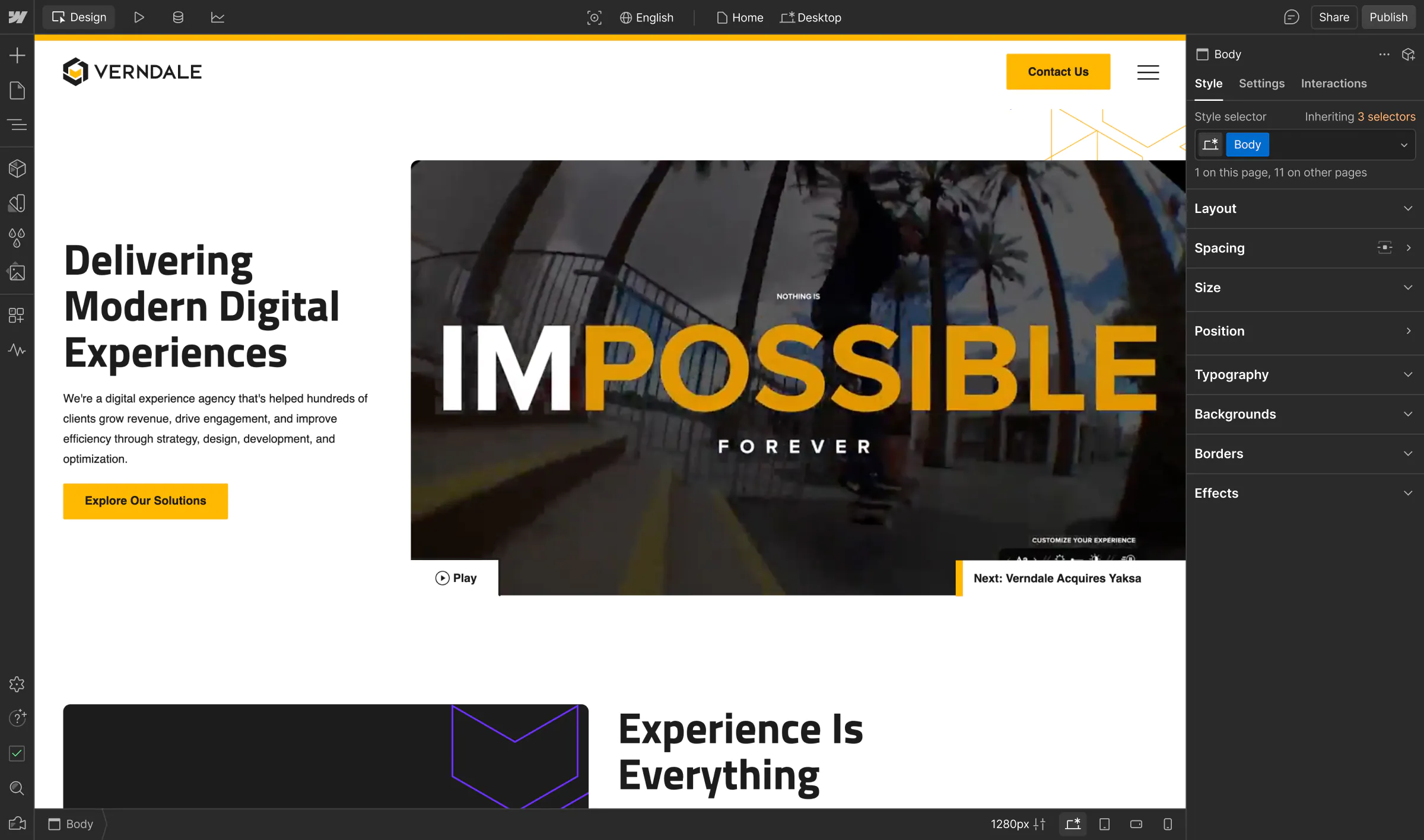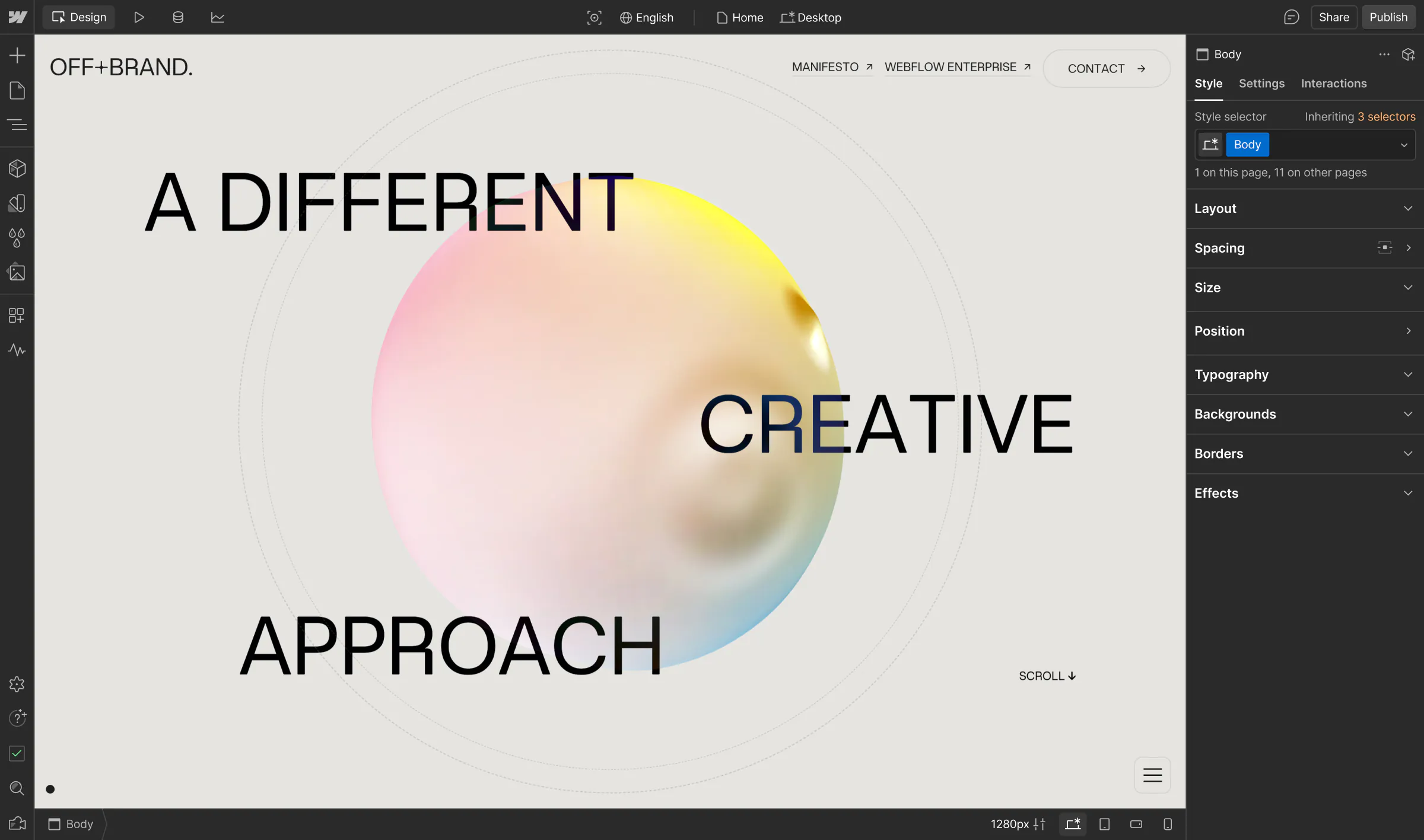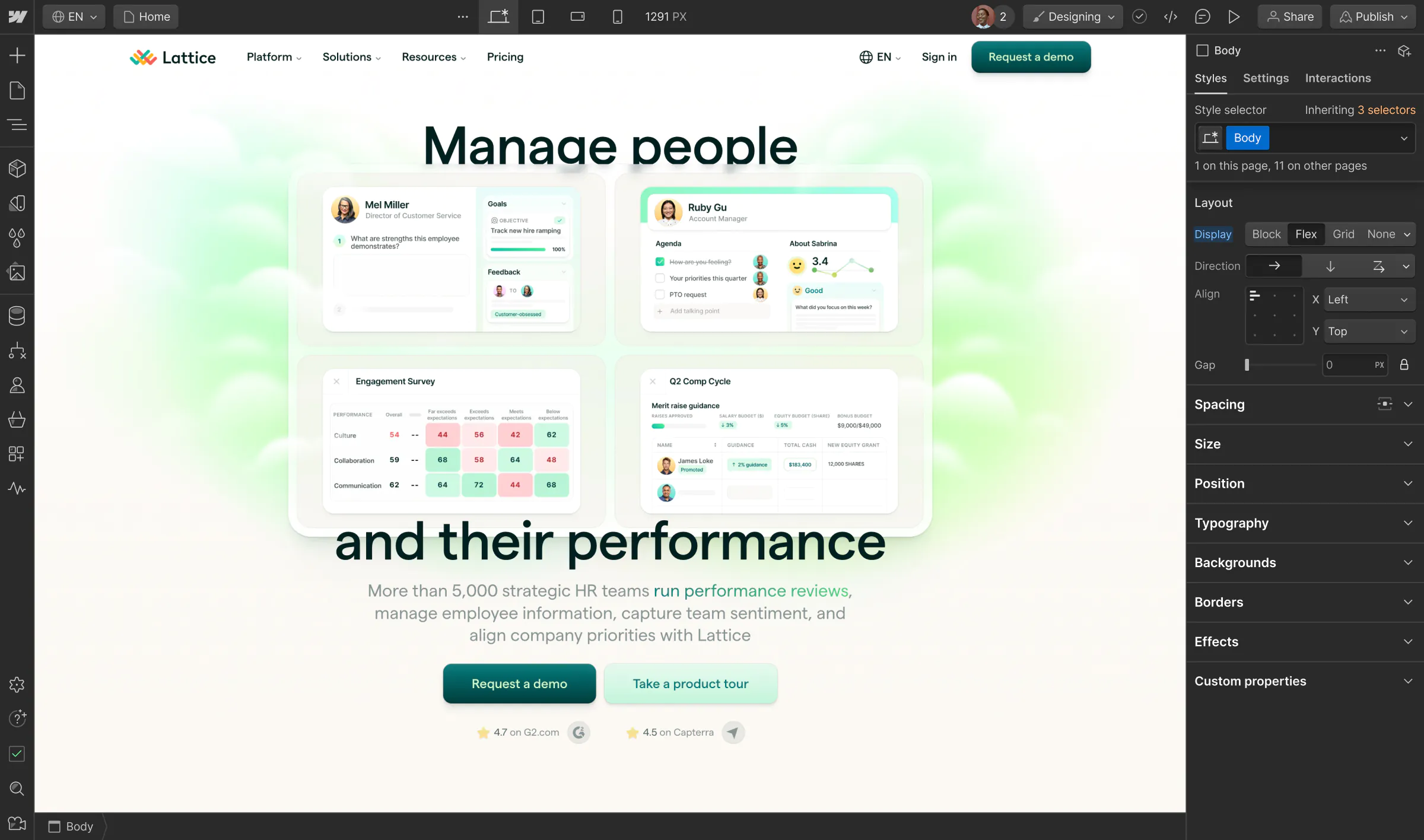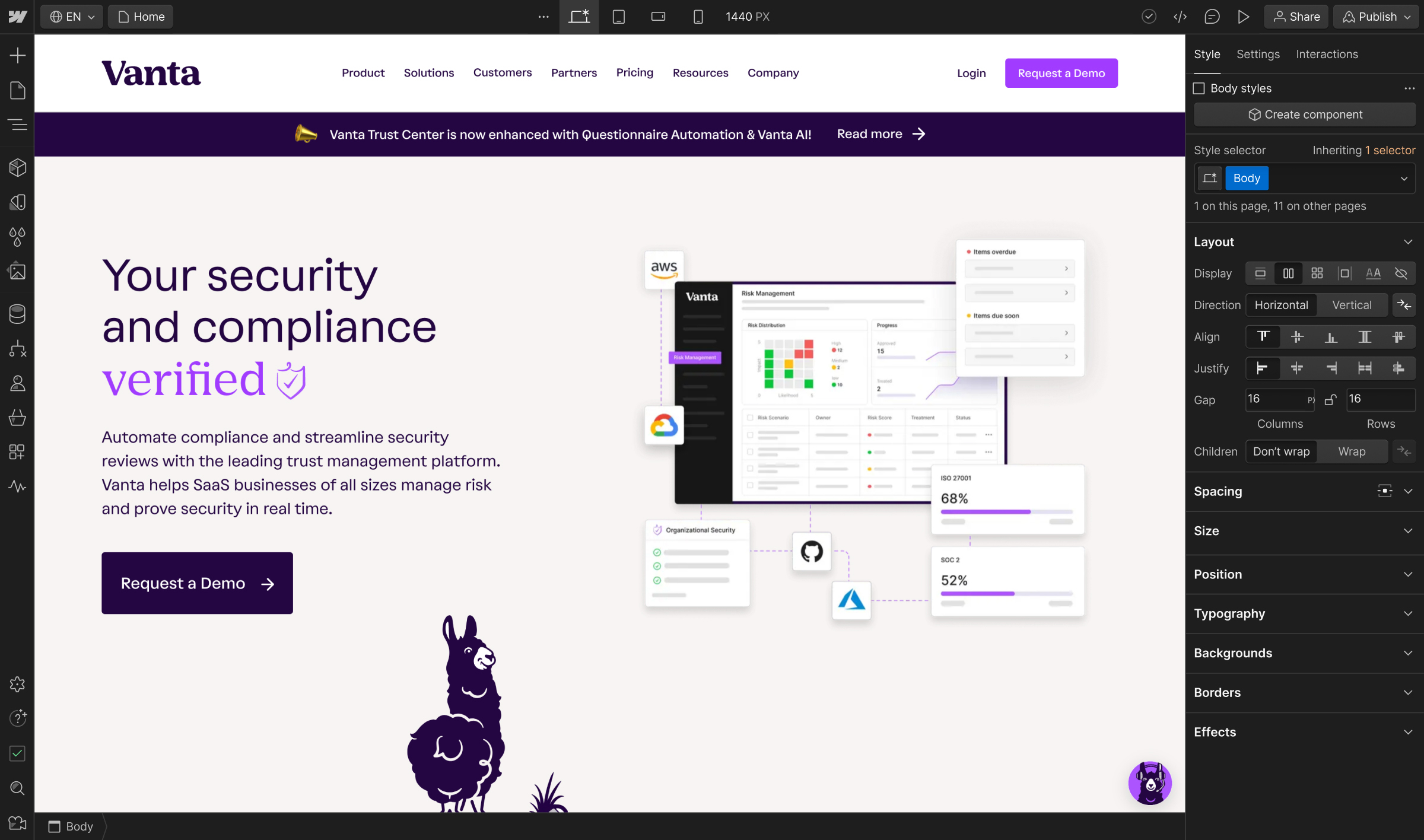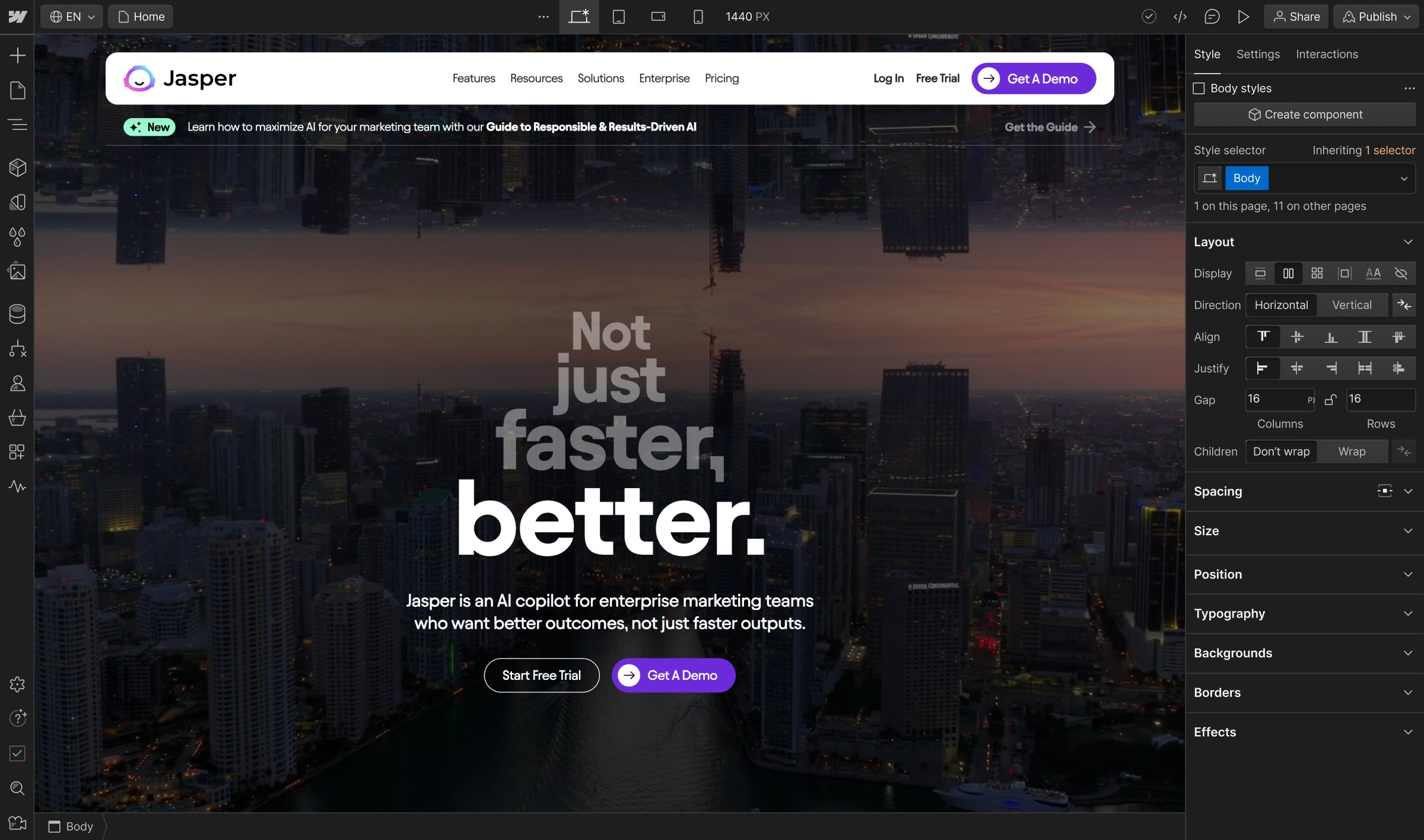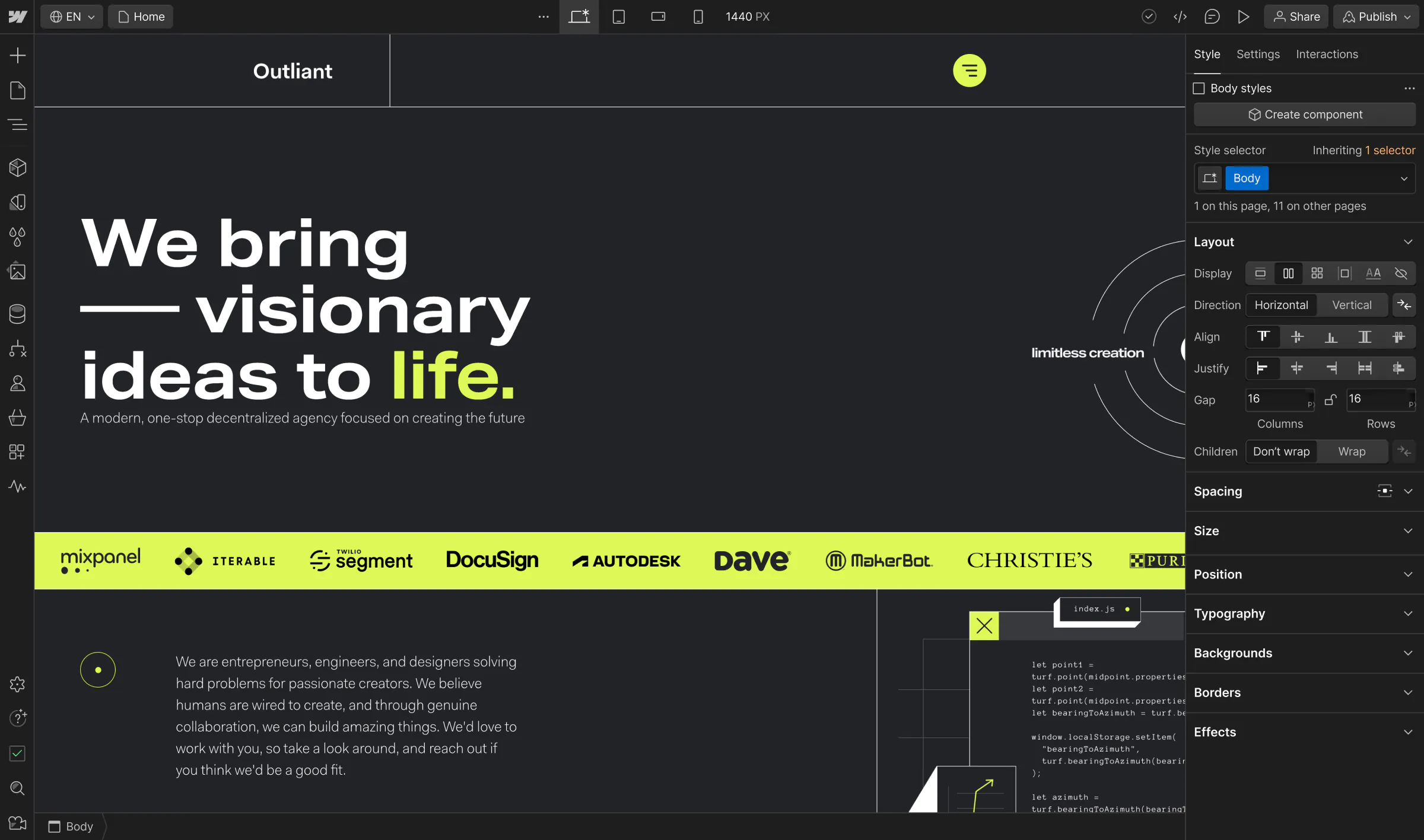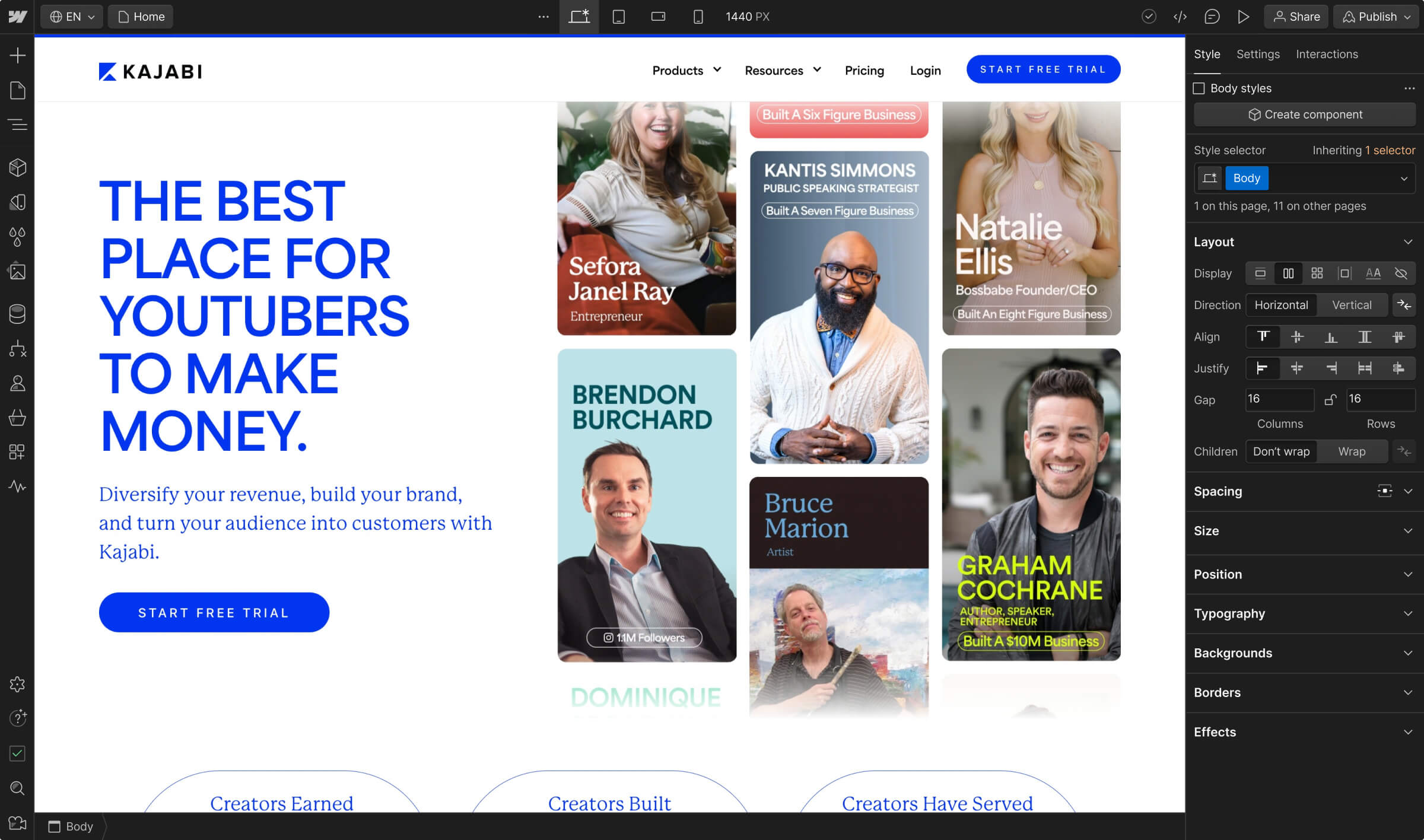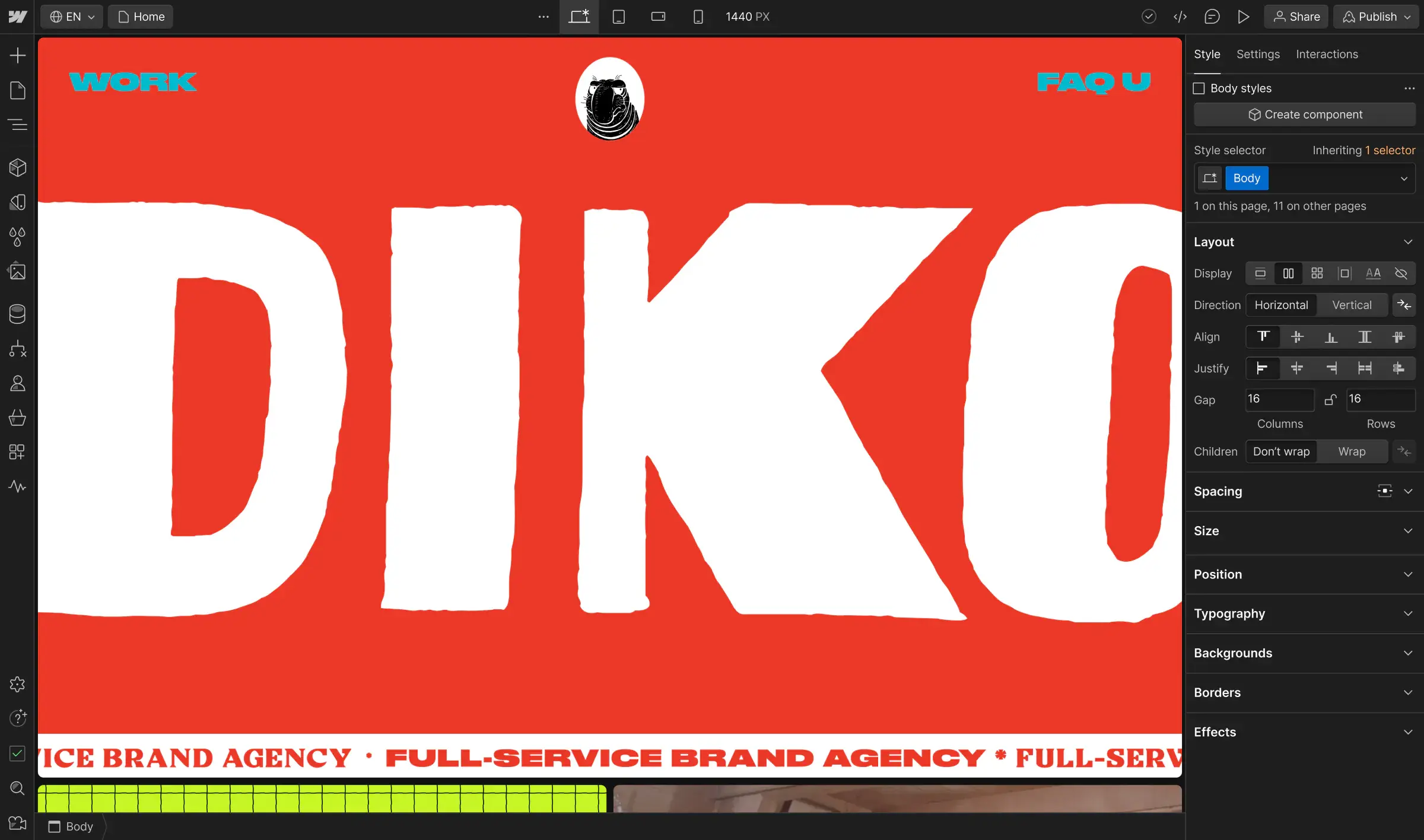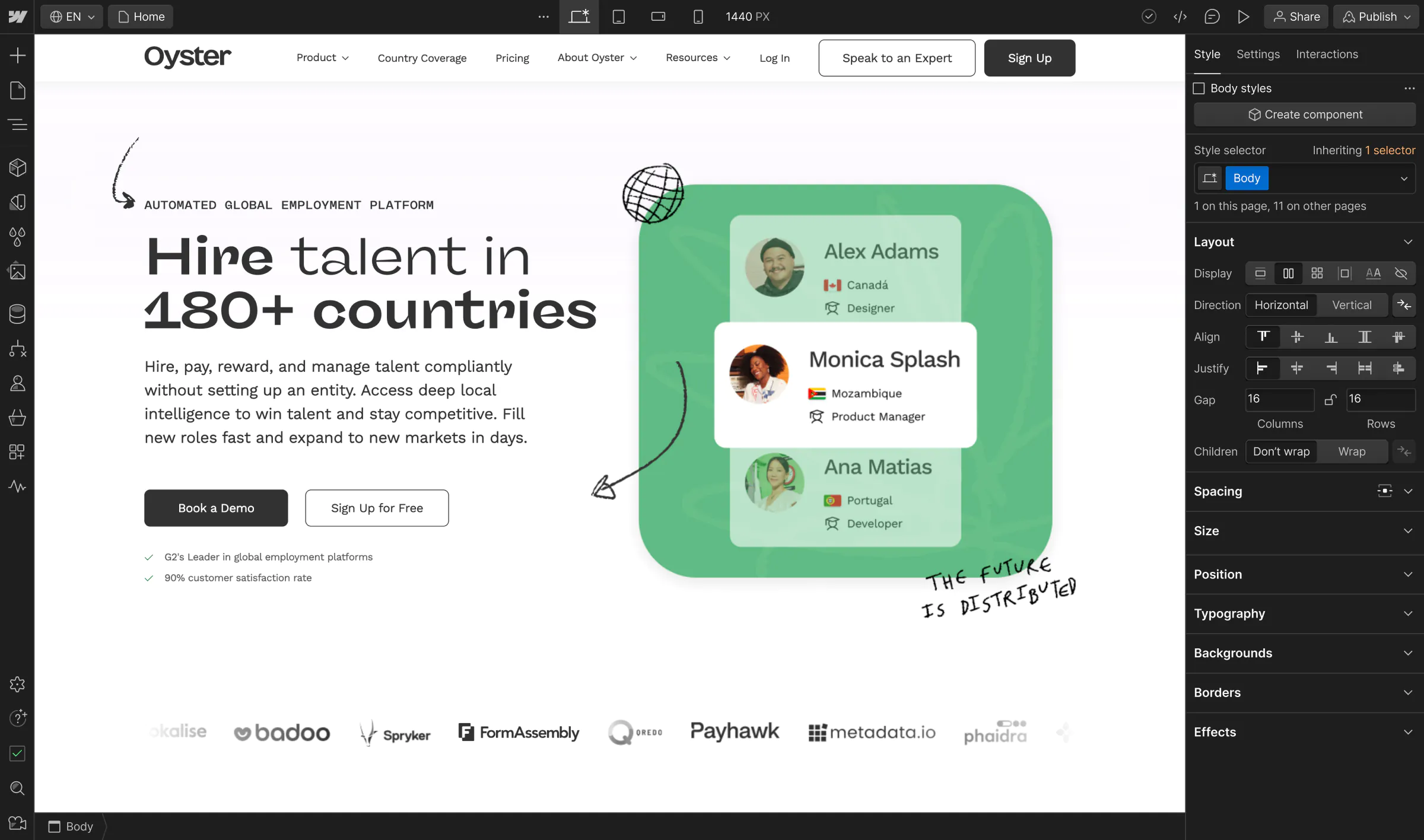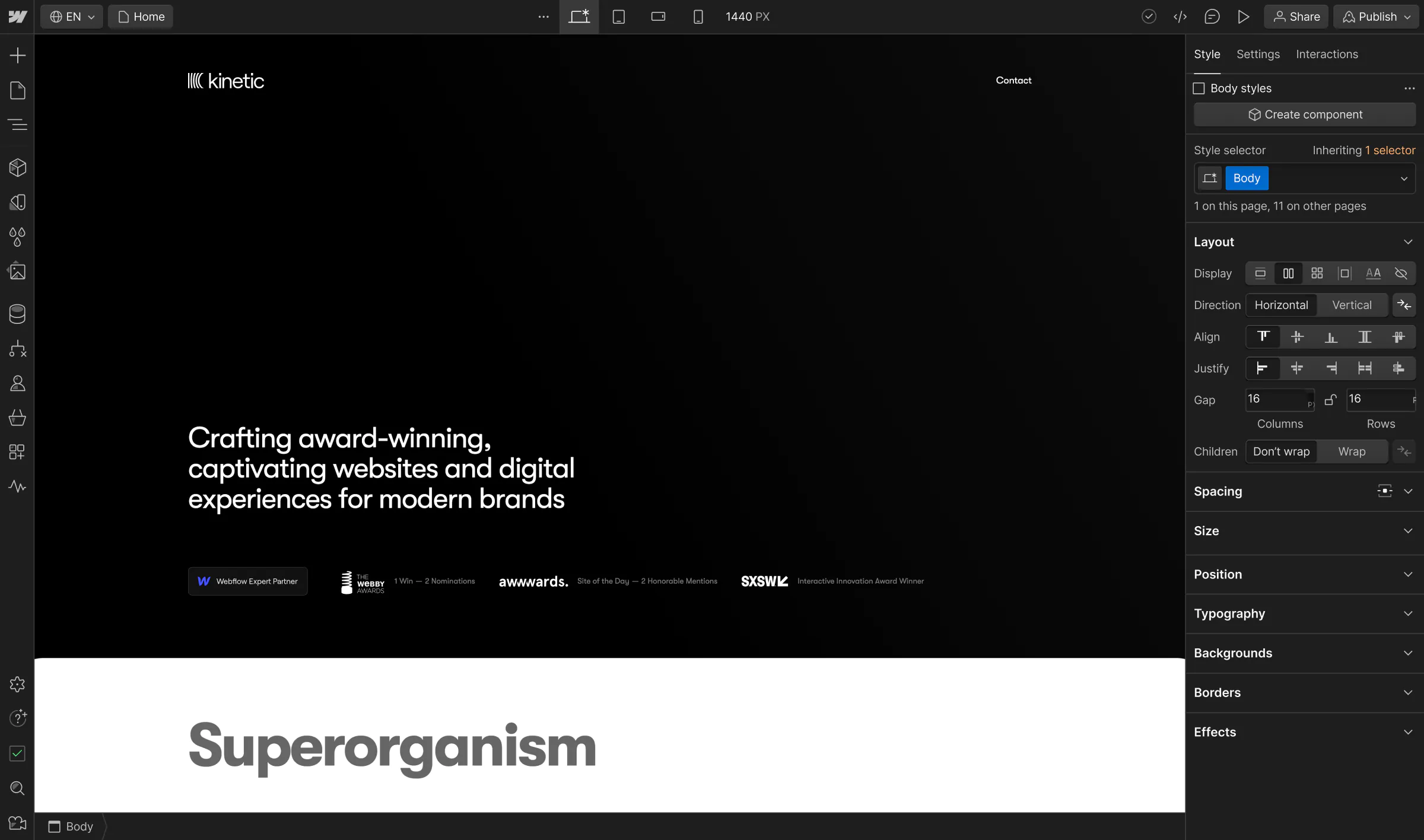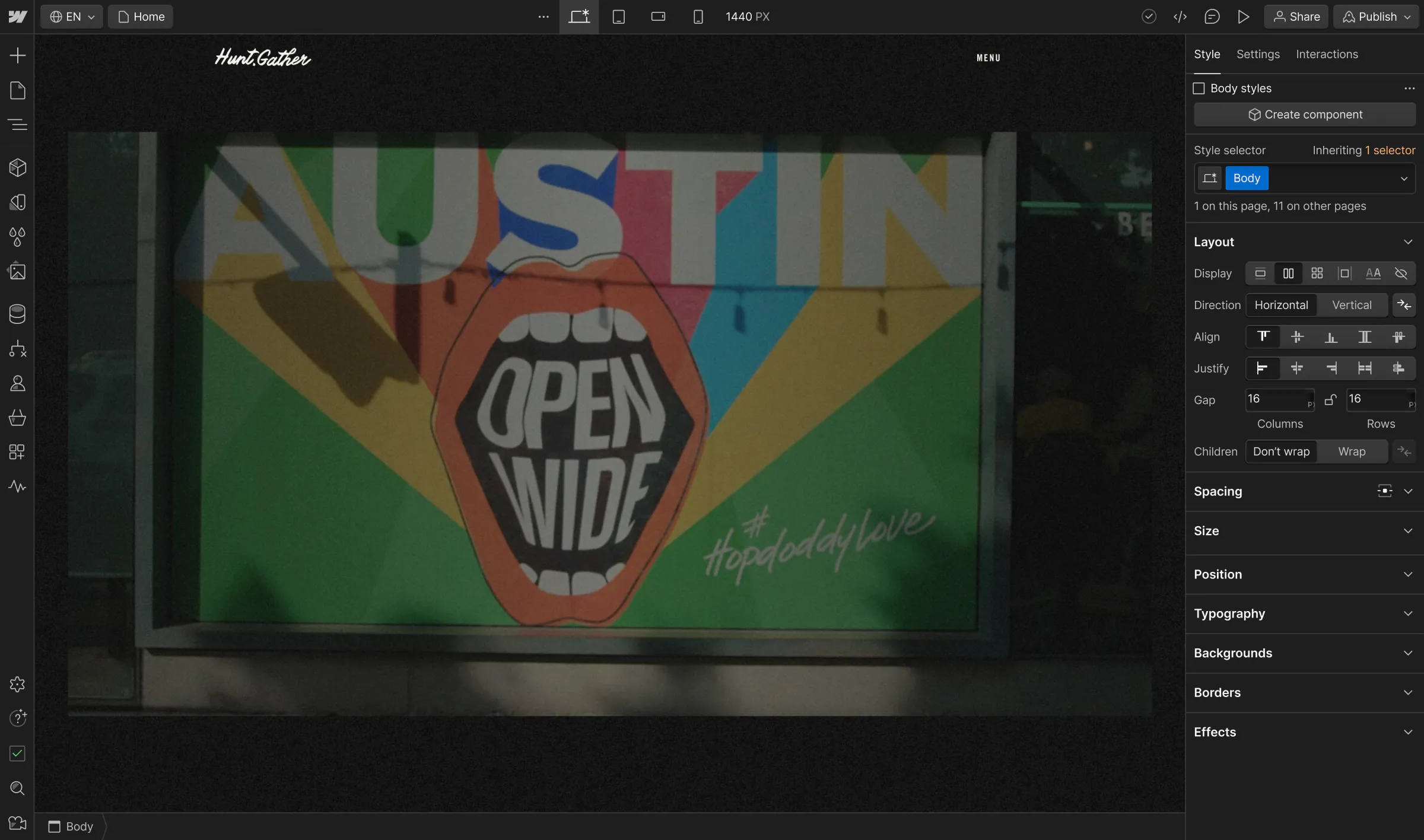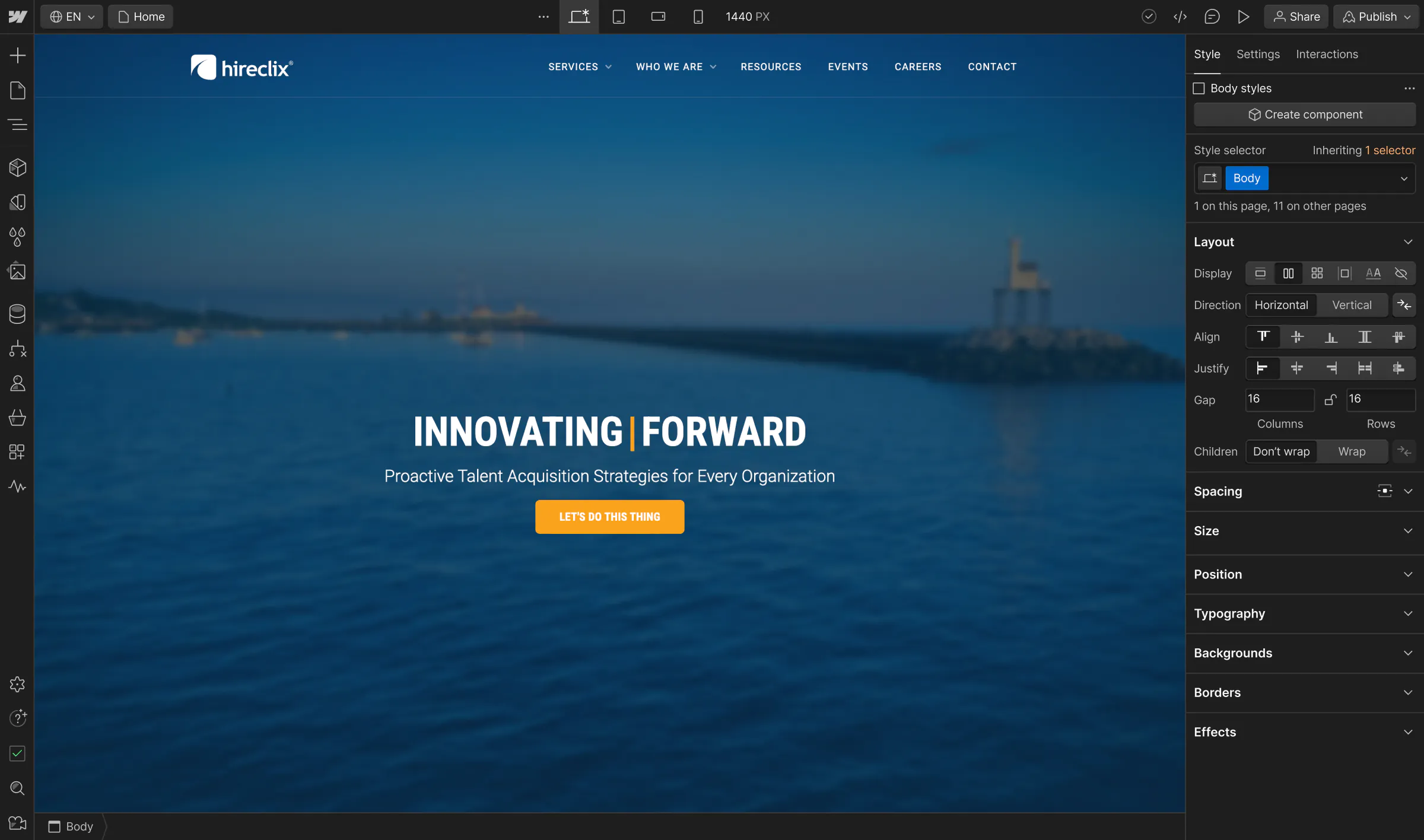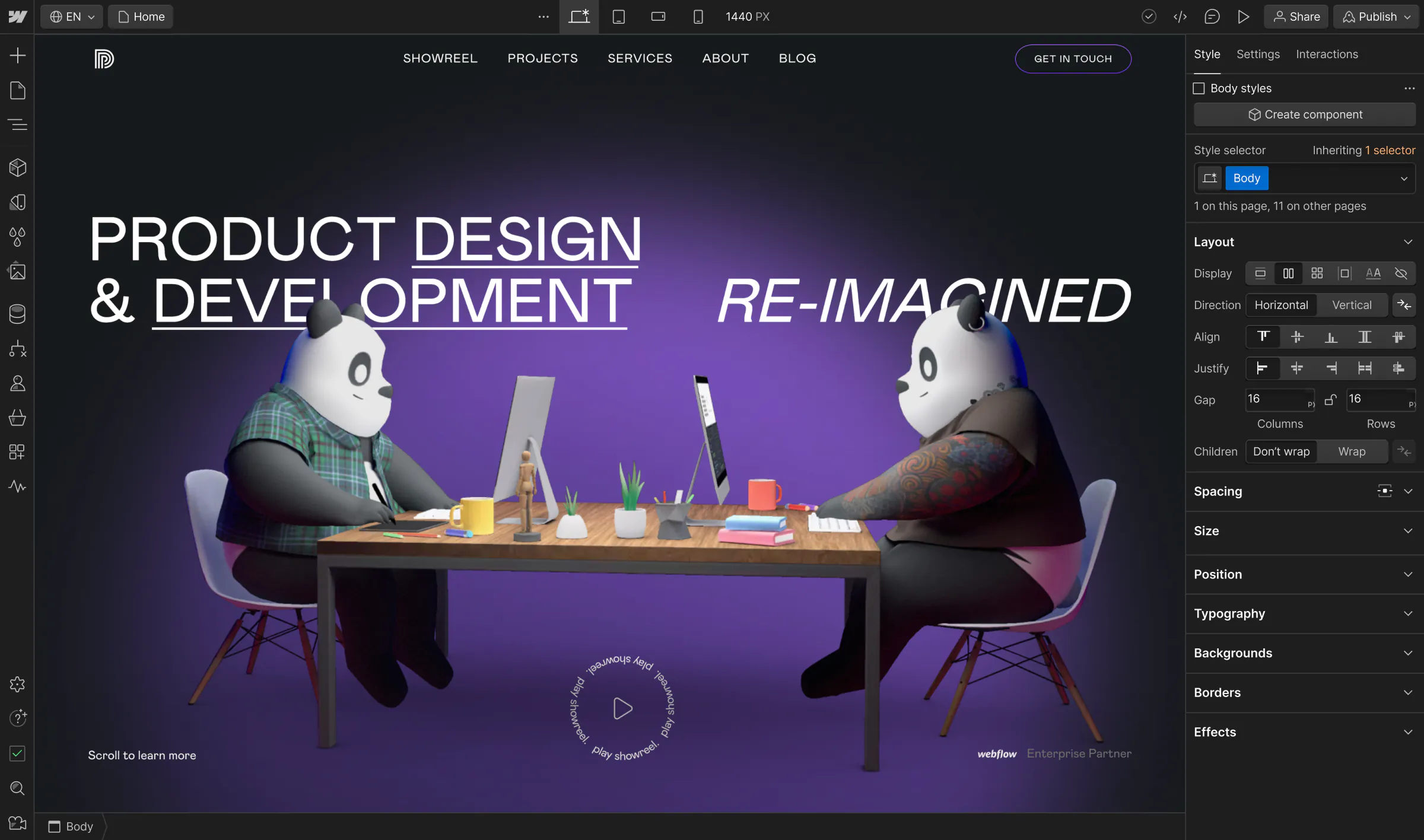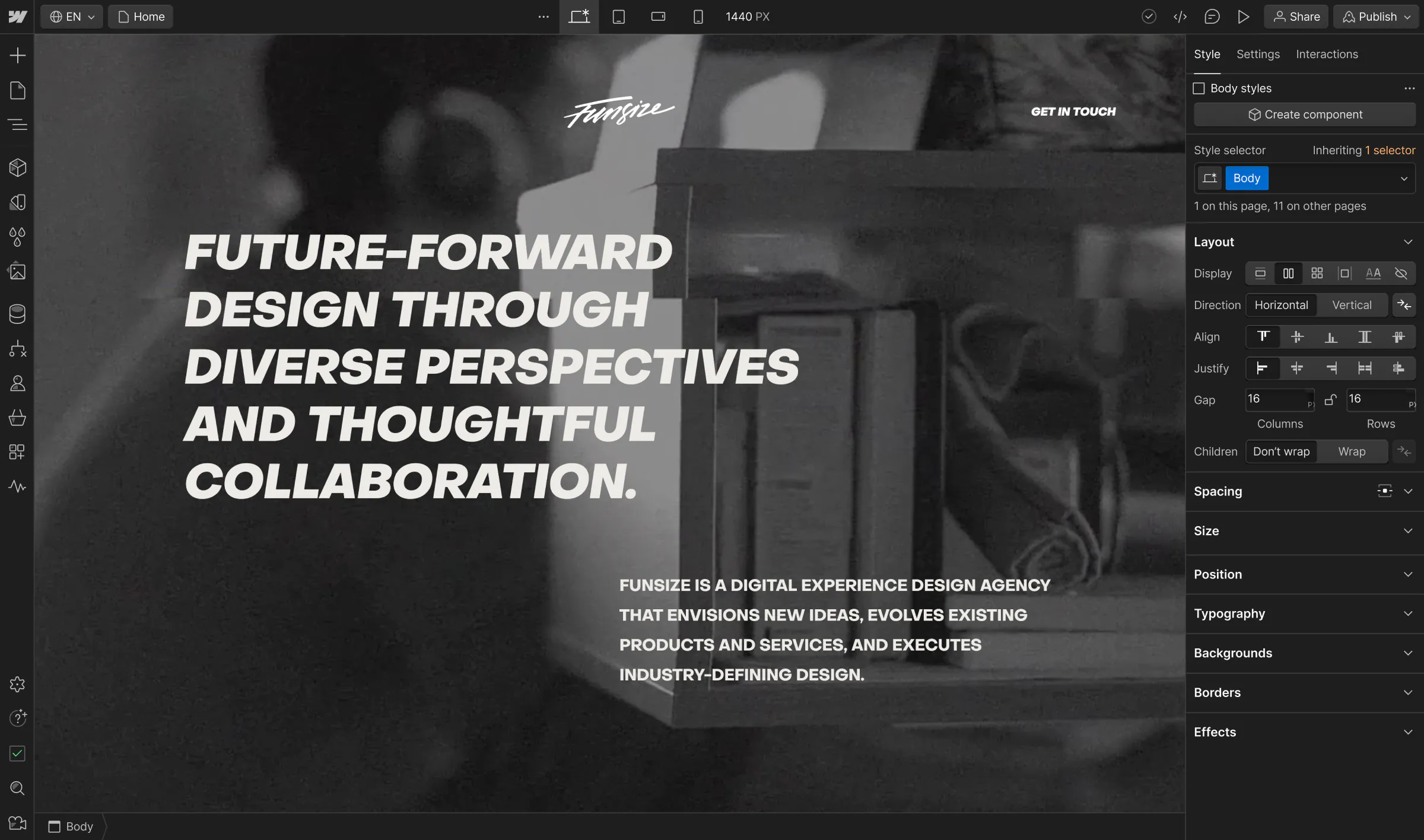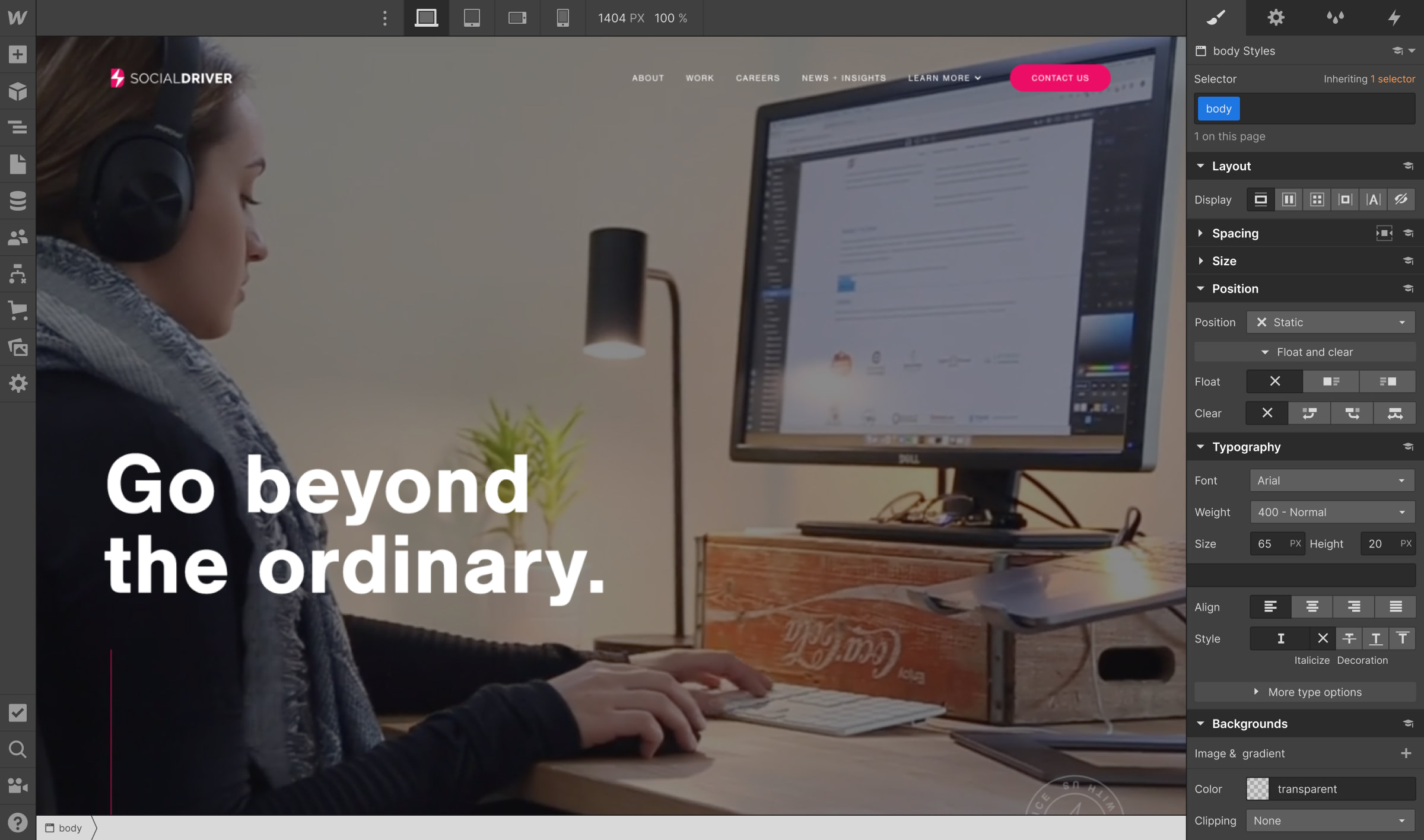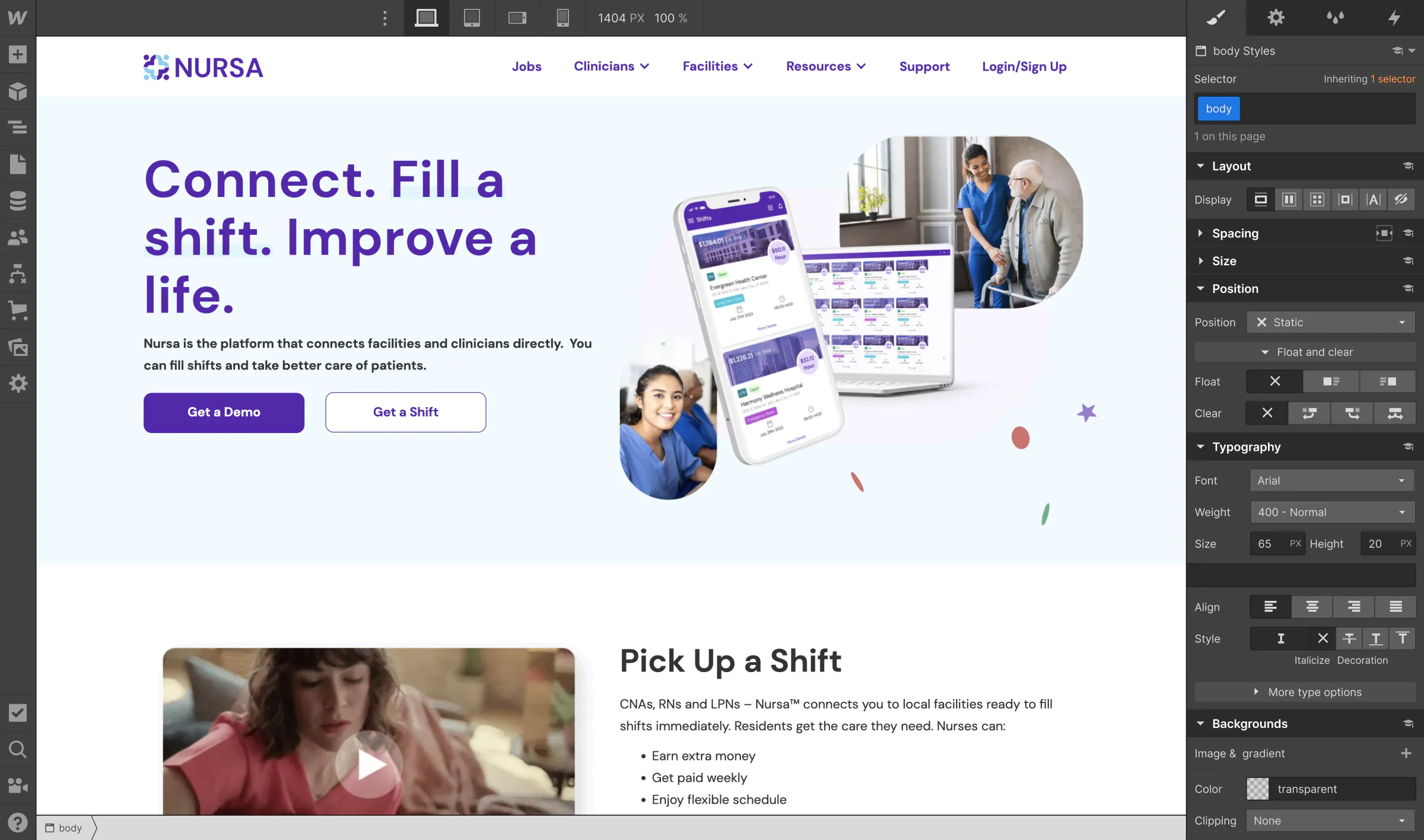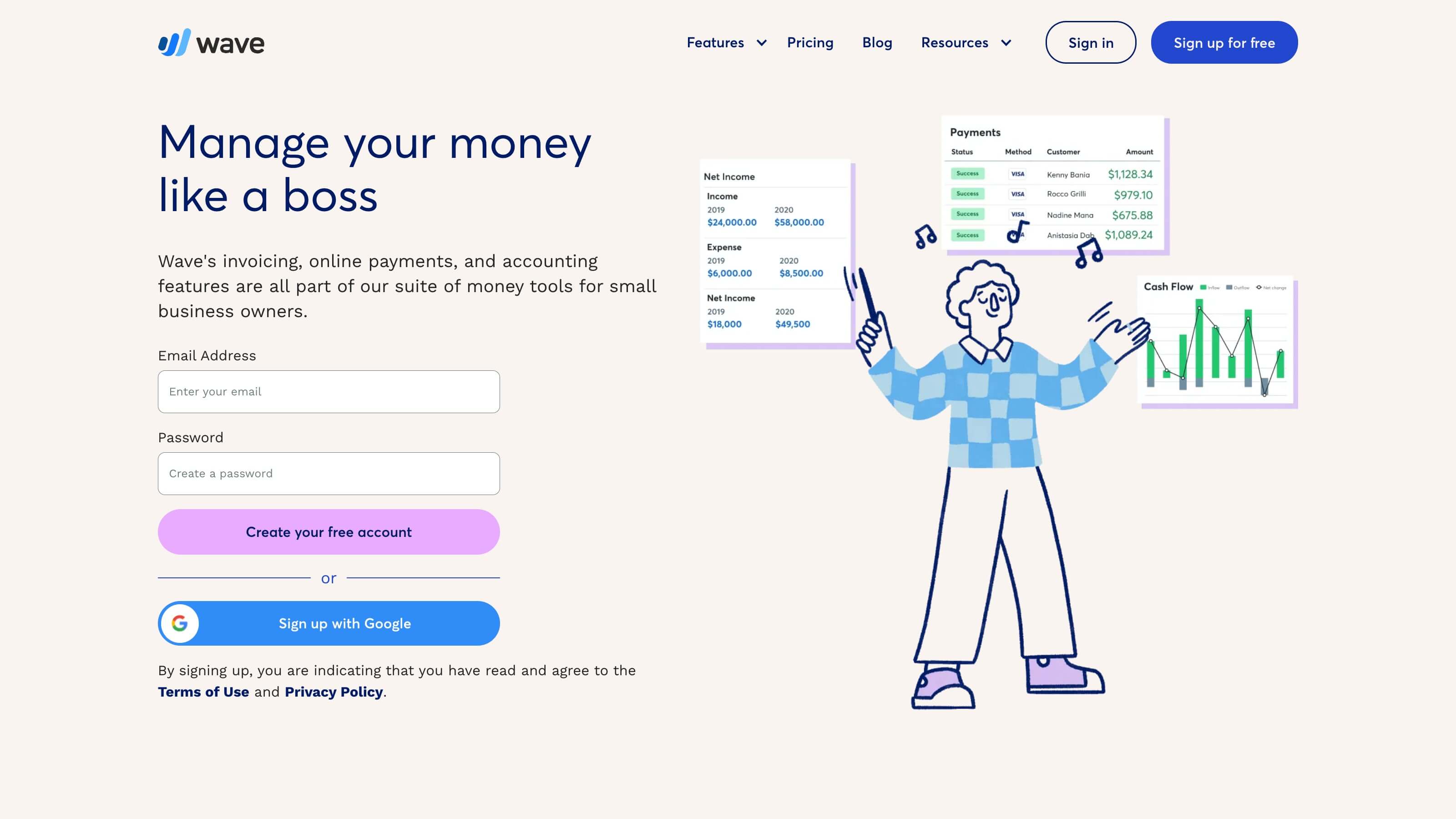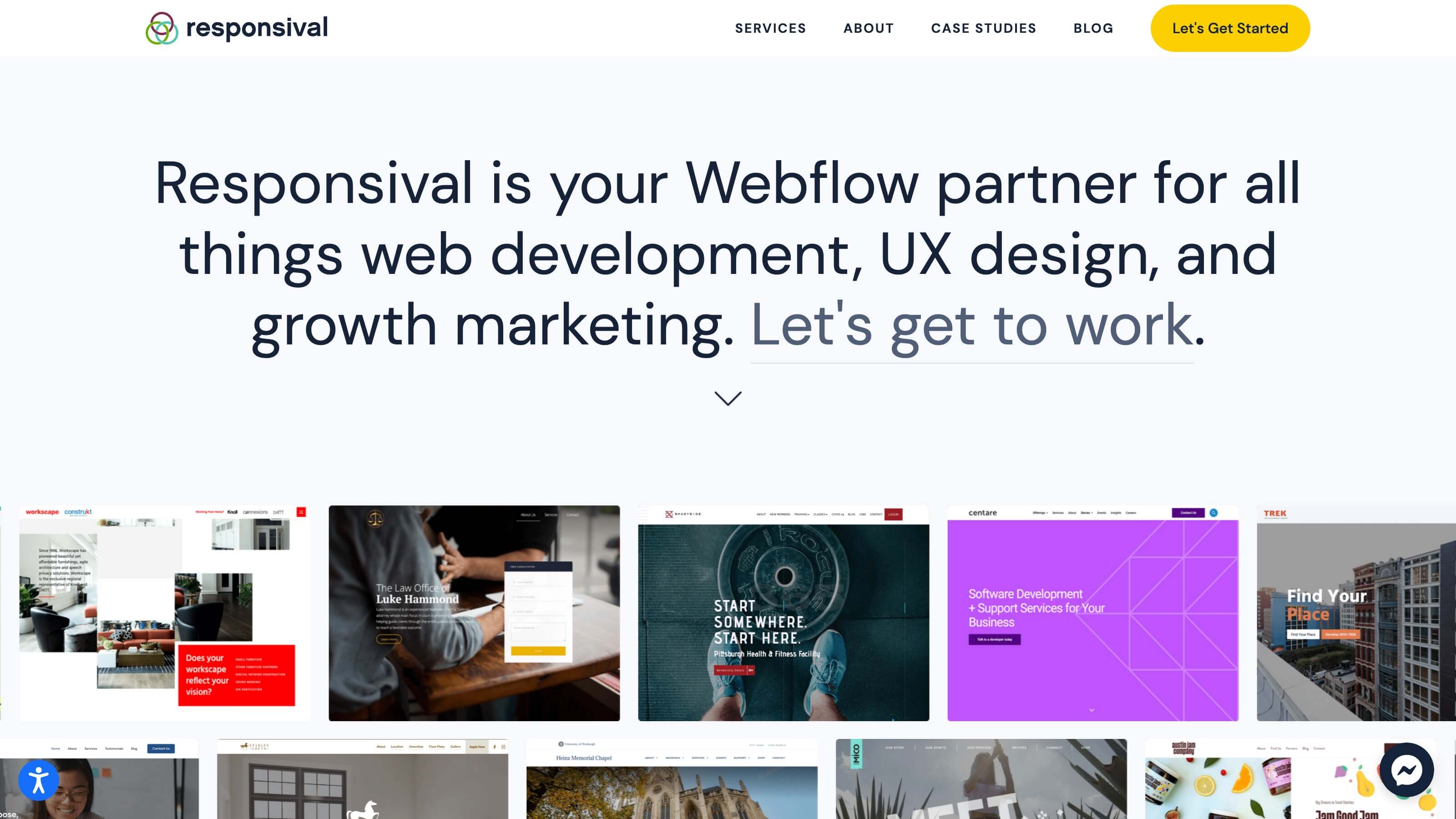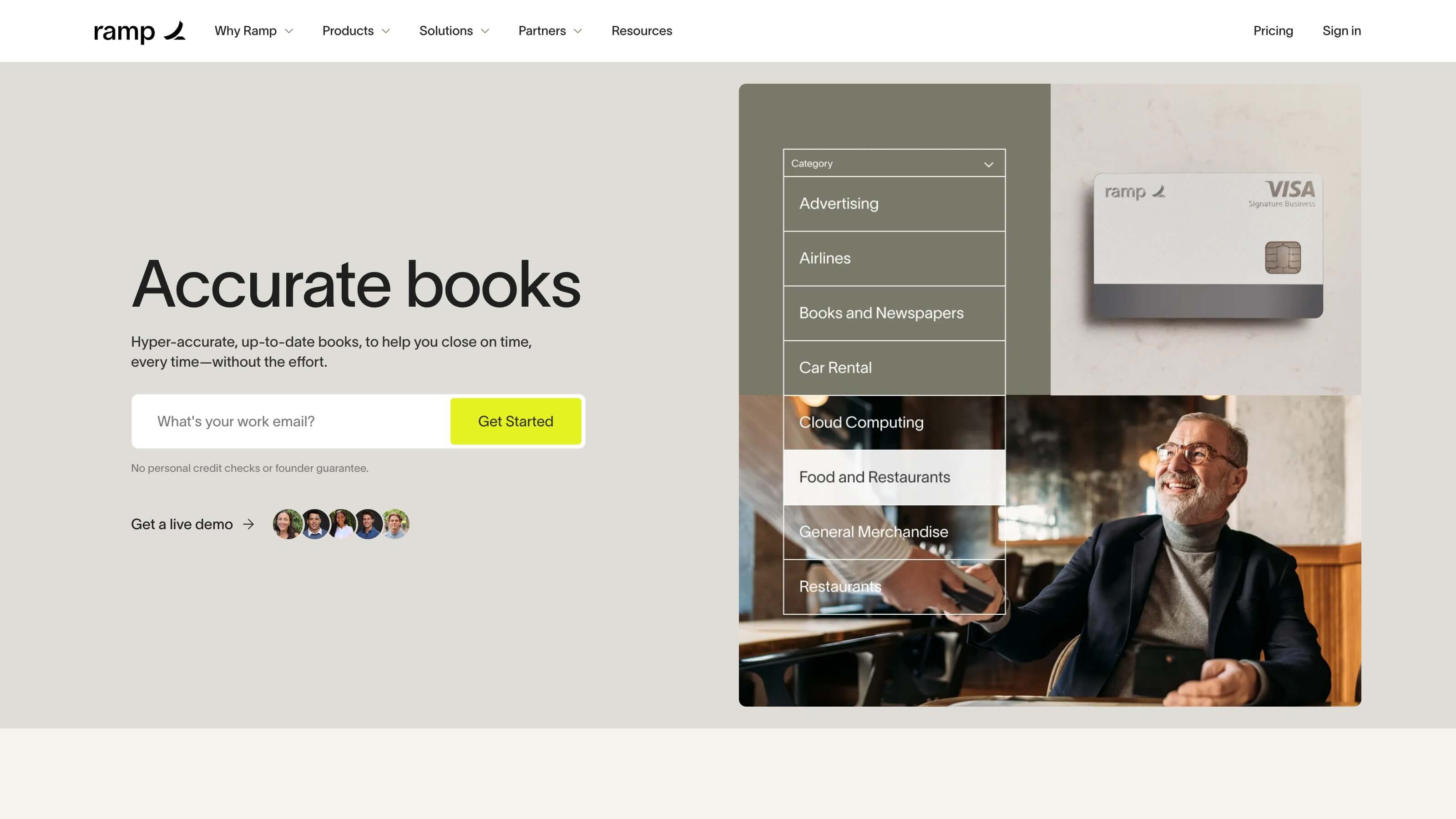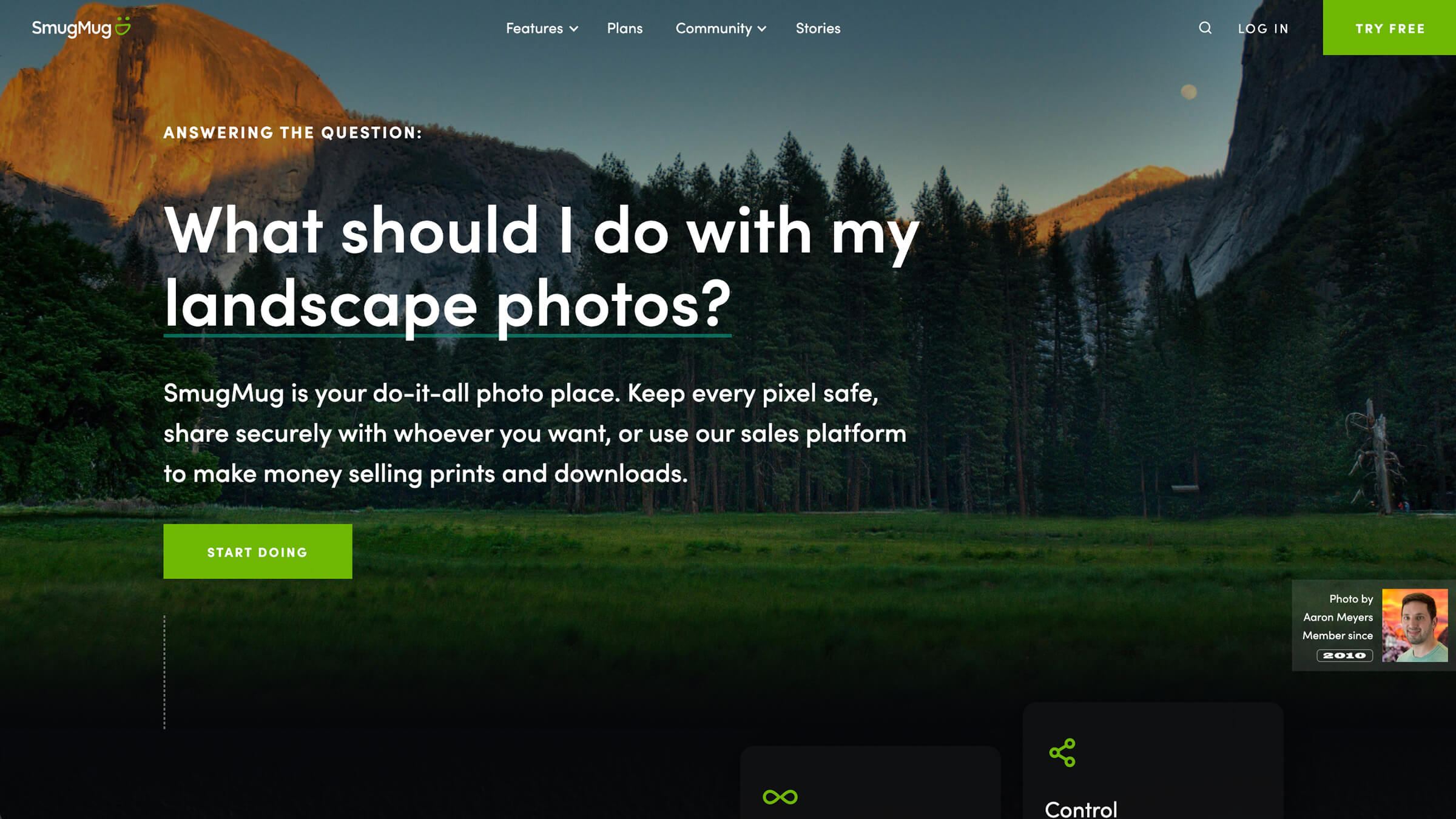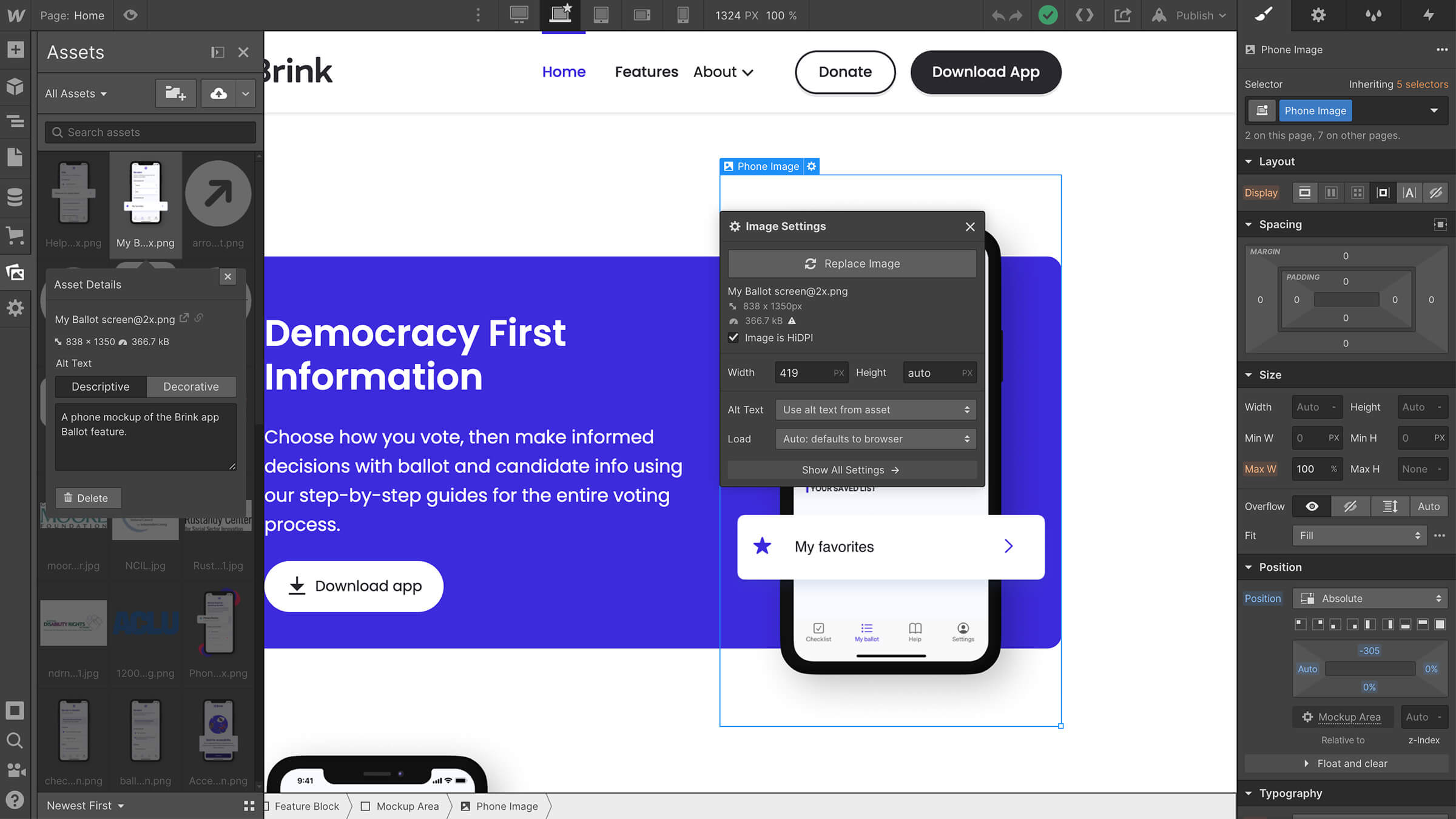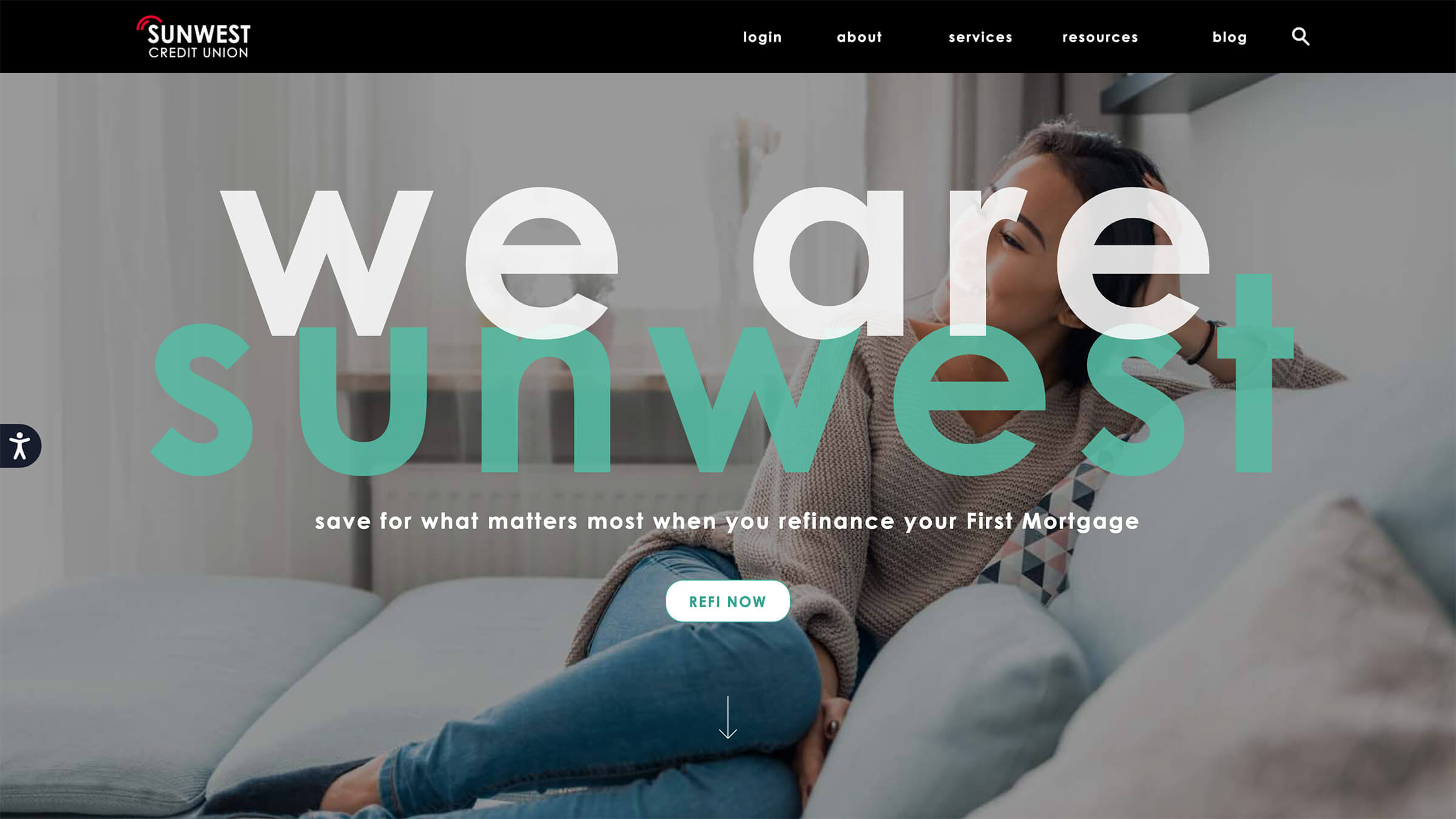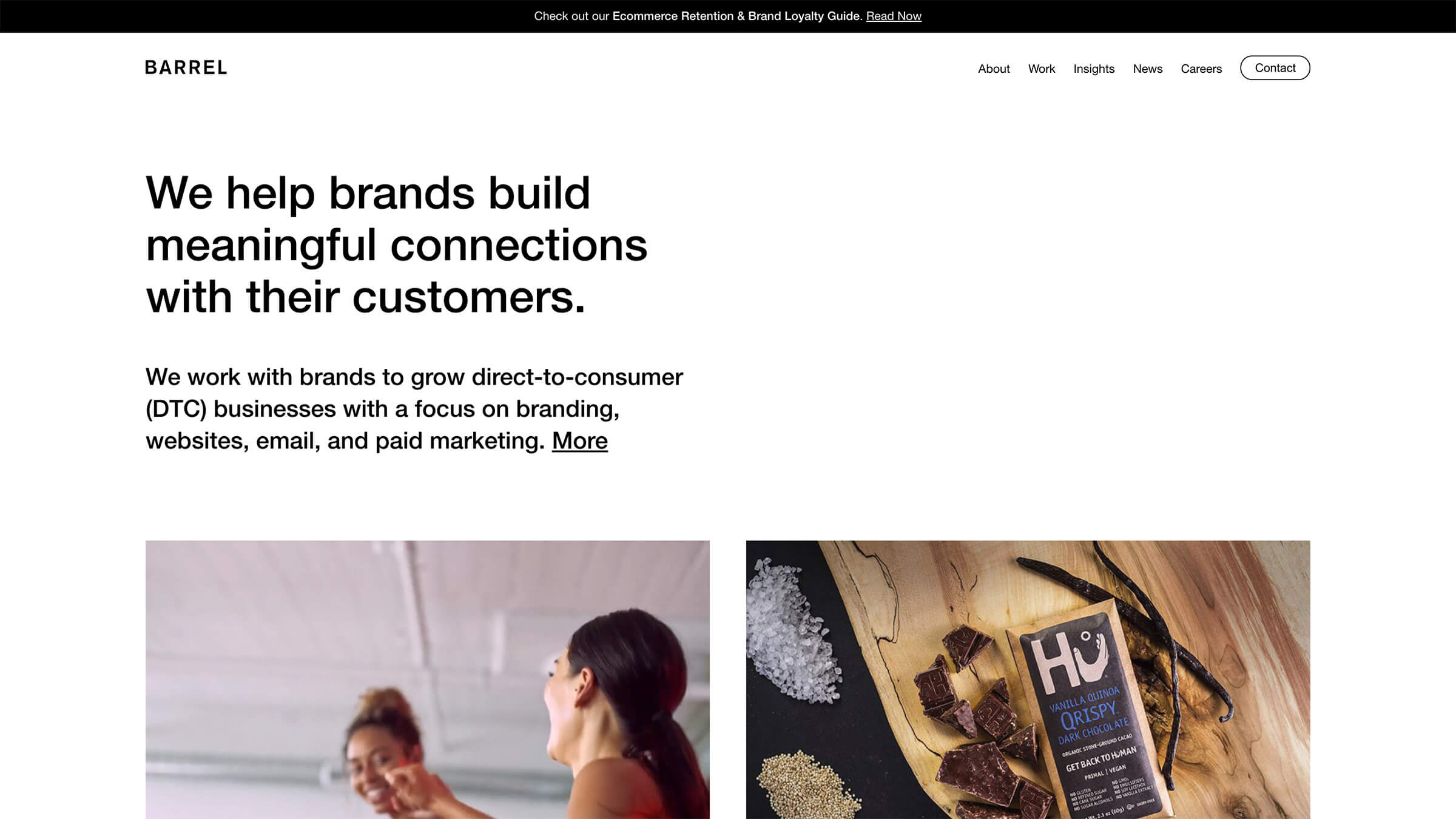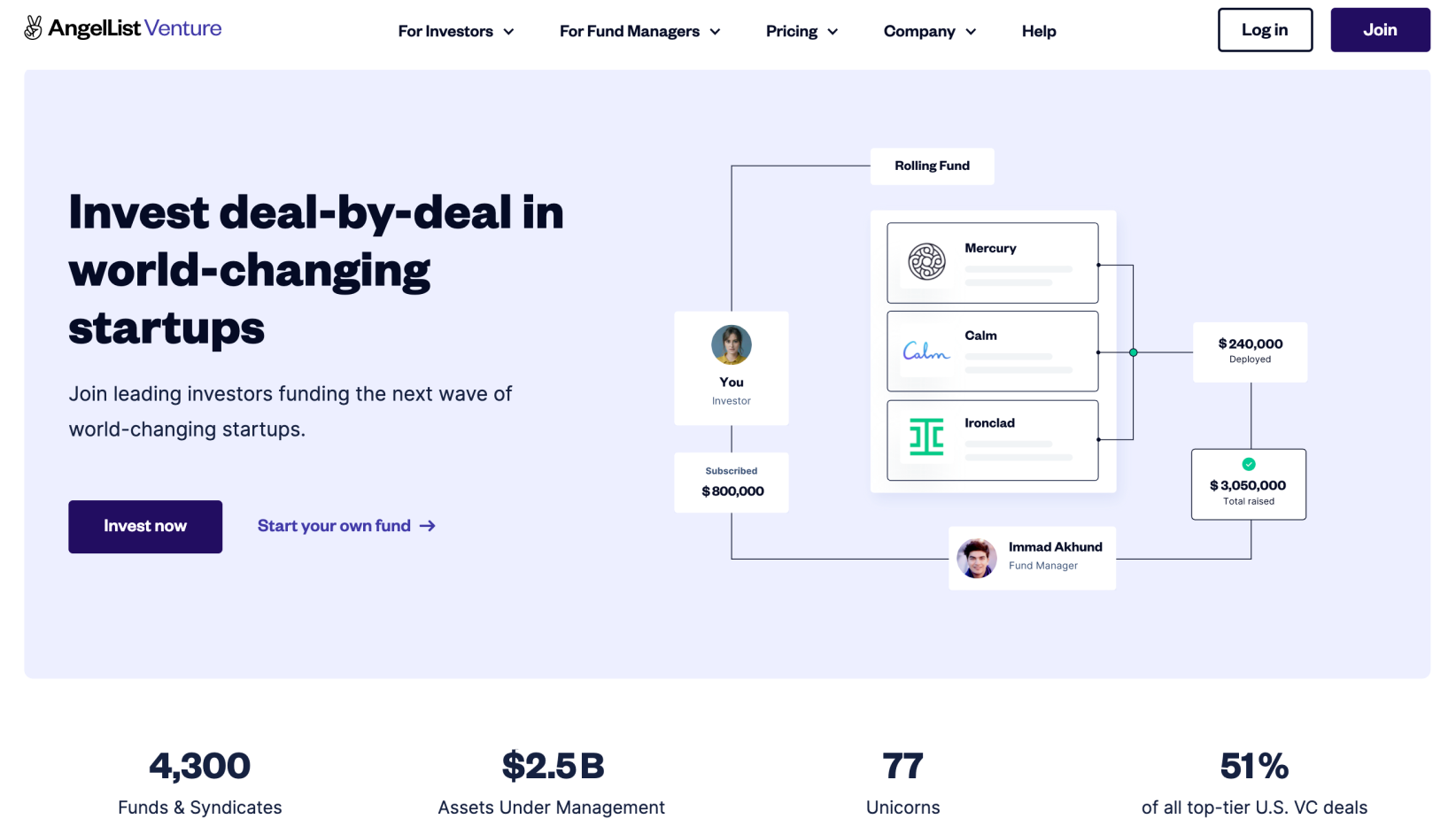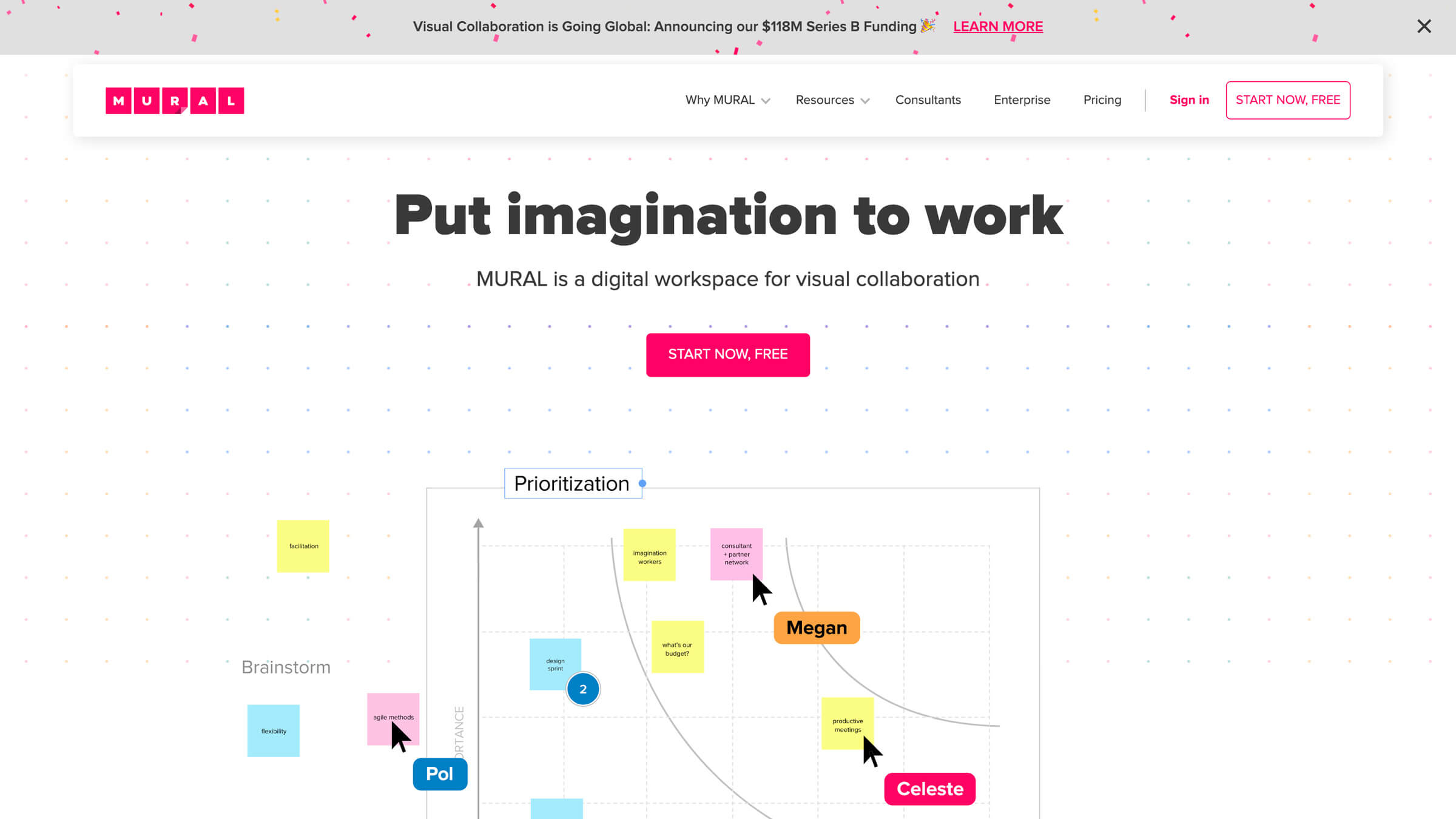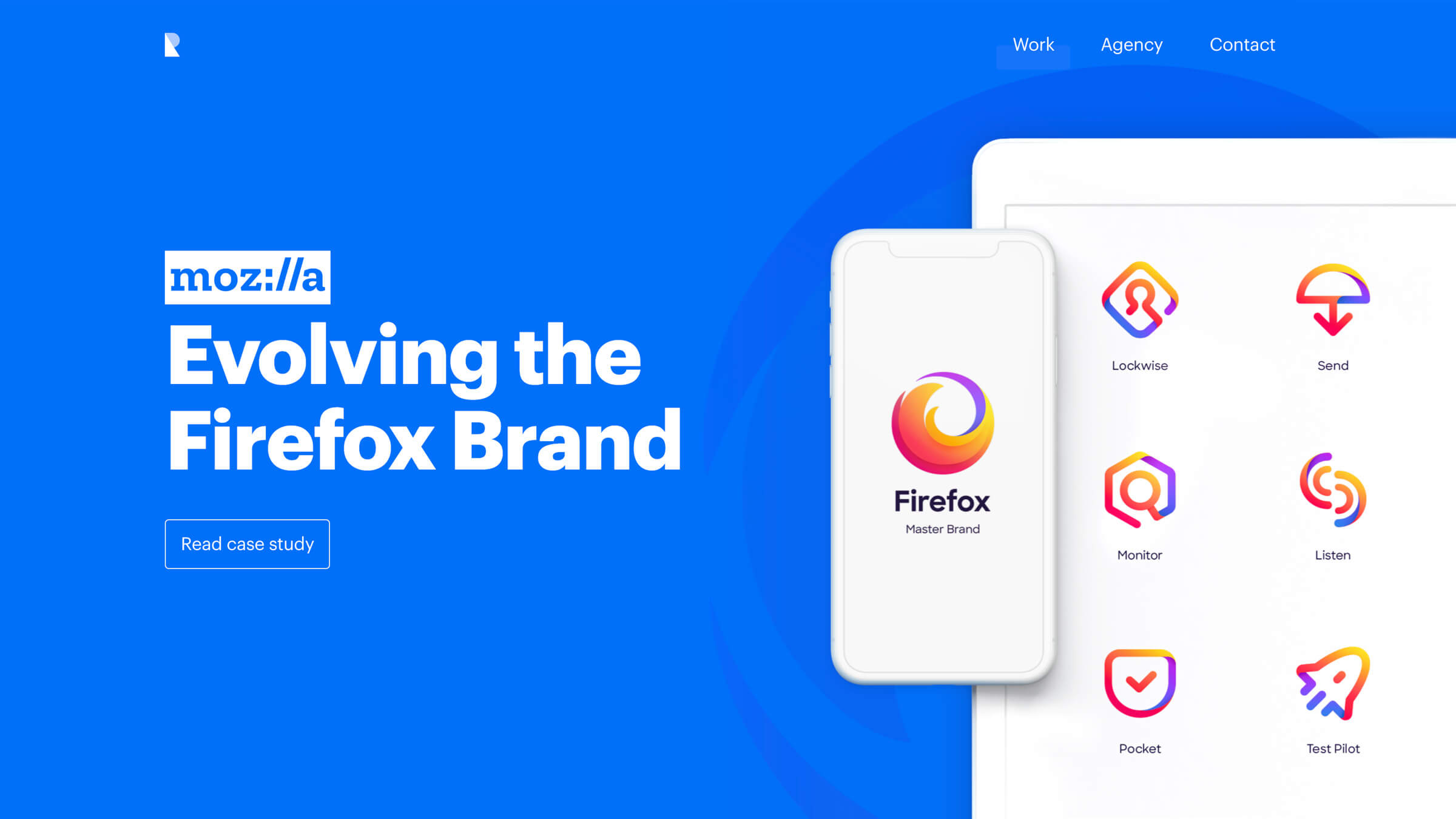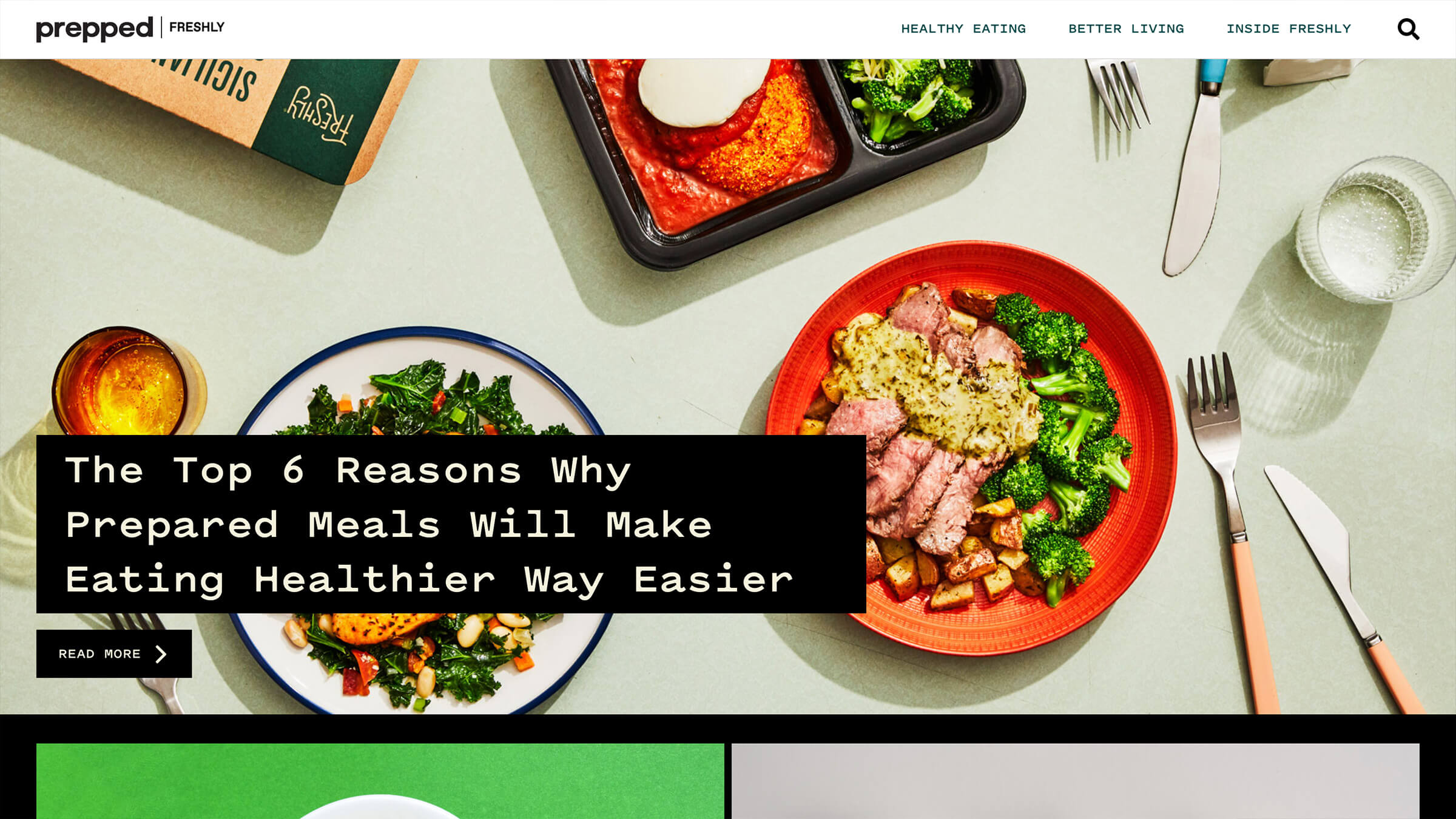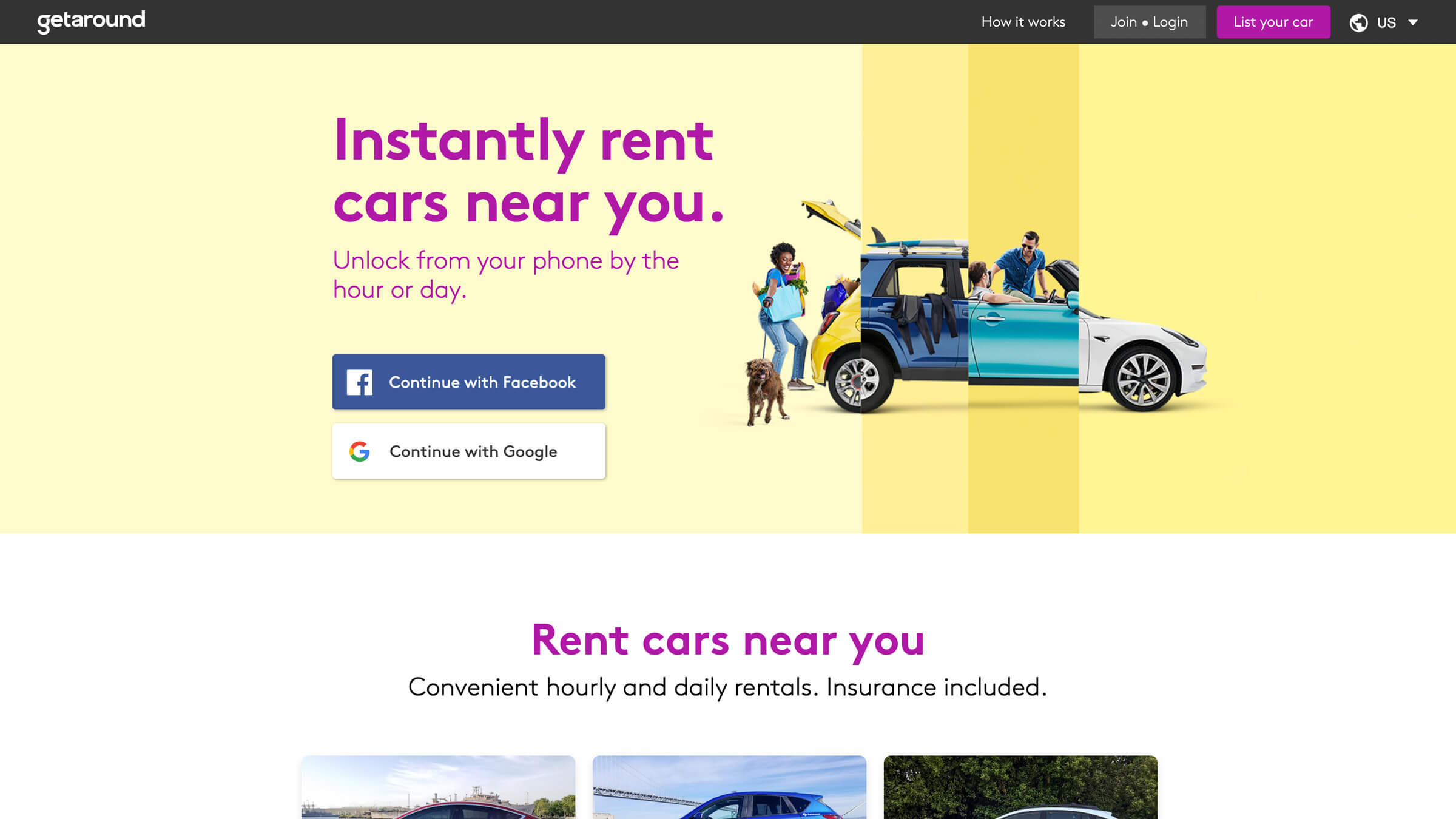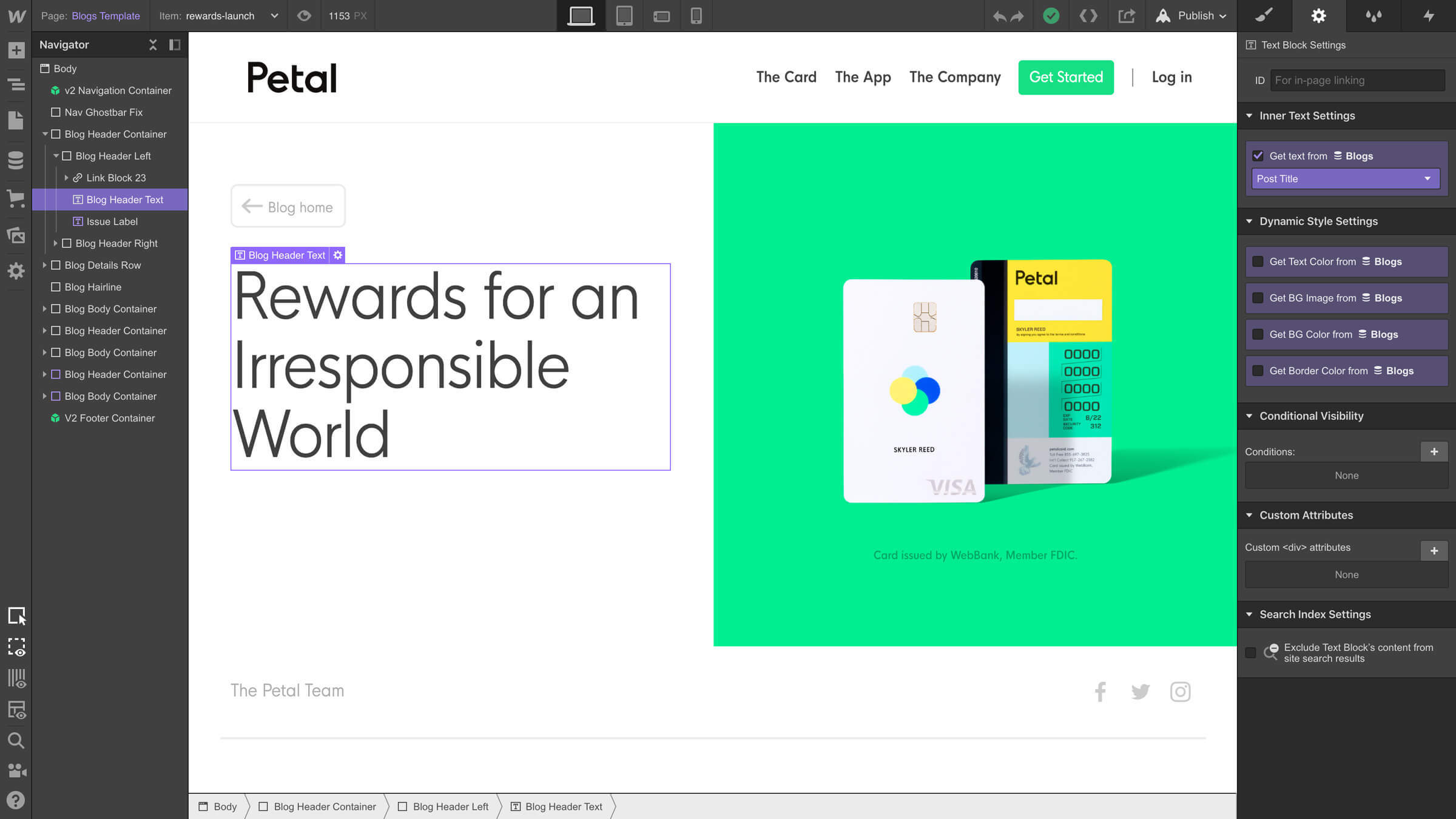How Smaller Earth Group uses Webflow Localization to reach audiences in 17+ markets
Previously reliant on developers to launch and manage custom sites, the cultural exchange group has optimized localization with Webflow Enterprise, significantly increasing speed to market and providing bespoke, branded experiences globally.
Unlock your site’s full potential with best practices vetted by our experts. Learn the Webflow Way.
“With Webflow Localization, we can ship fully localized, bespoke web experiences faster while saving on developer resources, which allows us to test viability in new markets with a lower barrier to entry.”

Spurred by a summer spent abroad, Chris Arnold and Dave Robinson wanted to help young students around the world access life-changing travel experiences. Today, Smaller Earth Group owns six brands that offer cultural exchange programs, with a strong following in the U.K., Europe, North America, South America, and Asia Pacific. Since 1999, they’ve welcomed almost 100,000 participants, inspiring the next generation to embrace curiosity and discovery by immersing themselves in other cultures.
Smaller Earth operates in more than 17 countries, and each has its own digital presence: Inclusions, visa regulations, and requirements are ever-changing, which means they have to constantly refresh and deliver local content in relevant ways. Since the programs are a substantial time and financial commitment, the websites need to optimize traffic by both educating students and compelling them to sign up.
Originally, Smaller Earth had a custom hardcoded setup that was cumbersome to update and restrictive when it came to launching new territories. Limited resources meant they were stuck with the templates and blocks they initially created, forcing them to bend each brand to work within those constraints. They needed an enterprise-grade solution that would enable teams across the company—not just developers—to deliver localized, dynamic content as they launched new programs.
Empowering the marketing team to work smarter and faster
Webflow's visual-first approach freed up our engineering team to focus on the most impactful work, while giving our marketing team the right roles and permissions to collaborate on the site safely.
Smaller Earth CMO Dean Maddocks has been with the company for 12 years, and now leads a talented team of marketing experts and content specialists. Since Smaller Earth’s programs revolve around the unique specificity and cultures of individual cities and towns, end-to-end website localization is integral to their success.
But the team was limited by their development resources and infrastructure setup. Tweaking text was manageable, but changing elements like the design, imagery, pricing, and navigation was more difficult, forcing the marketing team to go through developers—which would often take months. “Managing an in-house web development solution was too cumbersome to manage and too costly to maintain,” says CTO Ross Beale.
New to the role in 2023, one of Ross’s key priorities was building and optimizing Smaller Earth’s custom, in-house CRM product, and he needed a web solution that wouldn’t cause more infrastructure work for his nimble team. They debated tackling localization in house, but that would have required one or two additional developer hires, and an estimated $150,000+ annually.
“We needed to find a robust enterprise-grade solution that freed up our engineering team to focus on the most impactful work,” says Ross, which led them to Webflow Enterprise. They were especially drawn to Webflow’s advanced roles and permissions, which allows their marketing team to edit pages freely, but restricts design access to more technical teammates. This unlocked a new way for the marketing team to achieve business objectives while reducing overall costs—a win for everyone.
Launching end-to-end localization for 11 locales in 2 months
Webflow’s democratized editing experience allows our marketing team to quickly and continuously iterate on content to optimize conversion rates and deliver the most relevant information to our customers.
With Webflow Enterprise, Smaller Earth supercharged speed to market and launched 11 locales in two months. This included spinning up the Spanish site in three hours thanks to Webflow’s AI machine translation functionality, which automatically translates everything on your site from static text to dynamic content to metadata for supported locales. “I was impressed with the accuracy of Webflow's AI machine translation which drastically accelerated time to launch, while giving our team the option for more granular fine-tuning,” Dean says.
With Webflow’s best-in-class native SEO, Smaller Earth can maximize organic traffic in target locales with ease. This includes subdirectories that maintain domain authority, customizable URLs, localized metadata, and auto-generated sitemaps with HREF langs included. All of this ensures search engine crawlers like Google understand how your various localized pages are related to one another and boosts your SEO rankings. “Webflow Localization makes it easy to ensure everything is in sync so we can reap maximum SEO benefits,” Dean says.
The ability for anyone to edit content further increases efficiency, Dean explains. “We need something that’s intuitive to use but also protects the wider brand from any mishaps, which is where Webflow University and our dedicated support team come in,” he says. Instead of conducting extensive training every time someone new joins, they can simply direct them to Webflow’s digital resources and grant them relevant edit permissions. For more complex questions or website optimization expertise, they turn to their dedicated Webflow Enterprise account team. “Everyone is super responsive, and we feel very well looked-after,” Dean says.
Smaller Earth also takes advantage of localized page branching, which enables them to work on the same localized site in parallel—and build and ship faster than ever. “Webflow’s localized page branching makes collaborating across multiple locales way more efficient for our team,” says UX Designer Rory Horgan. “It not only allows us to design and build localized sites more quickly, but it completely removes the fear of making an error or publishing an unintended change—so we can just focus on delivering our best work.”
Scaling new business and tapping into optimal brand performance
Smaller Earth can now scale without limits, and our goal is to get all 10 branded sites onto Webflow and localized across 70+ locales in 2024.
Since they can now access, edit, and update the localized sites with Webflow, Dean’s team can properly serve both new and existing markets. “Webflow allows us to scale much quicker and put control in the hands of our marketing team,” Dean says. Before, they had to run exhaustive marketing campaigns to gauge interest in new locales, which sapped time and resources. Now, there’s a much lower barrier of entry and risk in terms of testing out demand in new markets. They can spin up a localized site in just a few hours: If they see strong engagement, they’ll move forward, but if not, they can shut it down with little effort.
Smaller Earth’s goal is to migrate all of their content onto Webflow in 2024, with the opportunity for 70+ locales across 10 branded sites. Then the work really becomes about conversion rate optimization, user experience, and customer service—and the ability to continuously test everything more efficiently with Webflow. They’re especially intrigued about the analytics tools available through Webflow’s App Marketplace, leveraging data to segment marketing and target potential students.
“Webflow will scale with Smaller Earth without us needing to continually invest in more engineering and development,” Dean says. This is paramount over the next five years as they expand the business. “As a house of brands, we now can create and launch new experiences and products for all our unique markets,” he says. “Webflow allows us to finally live up to the brand vision our creative directors and designers have put so much effort into building.”
Explore more Enterprise stories
Explore more stories
Get started for free
Try Webflow for as long as you like with our free Starter plan. Purchase a paid Site plan to publish, host, and unlock additional features.
Try Webflow for as long as you like with our free Starter plan. Purchase a paid Site plan to publish, host, and unlock additional features.


